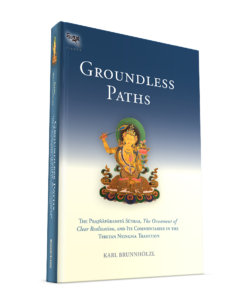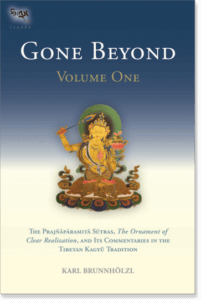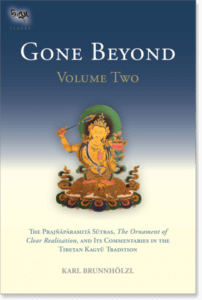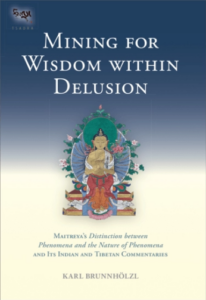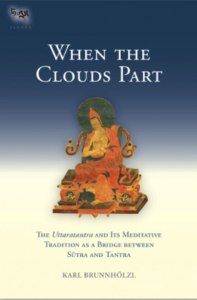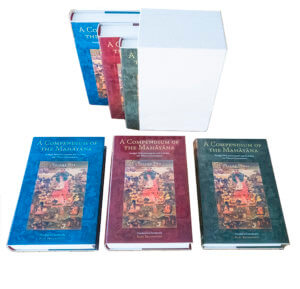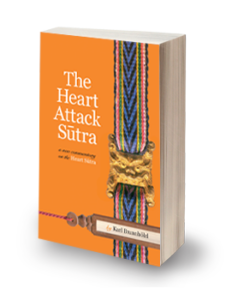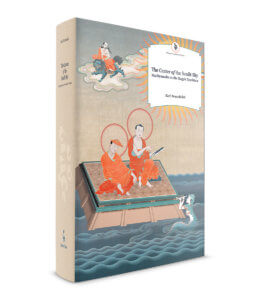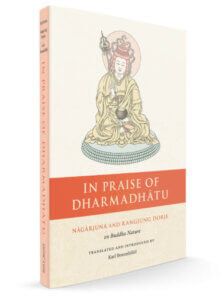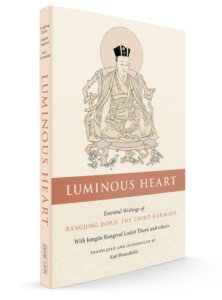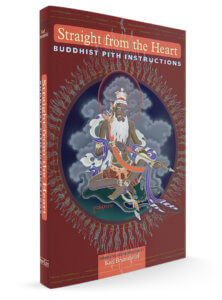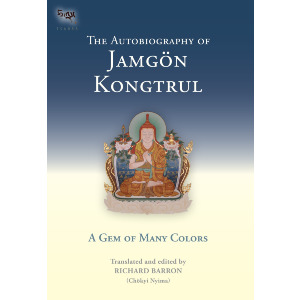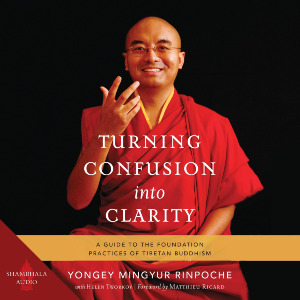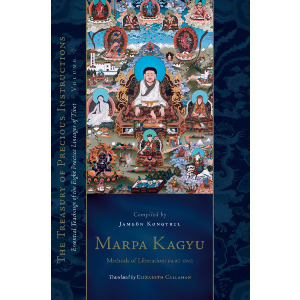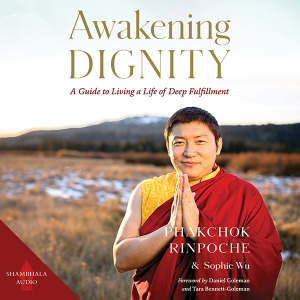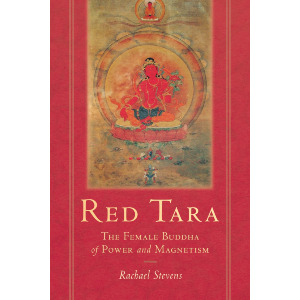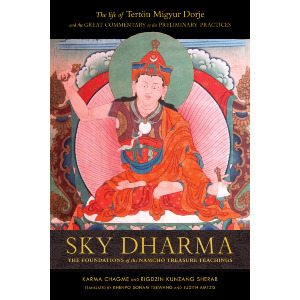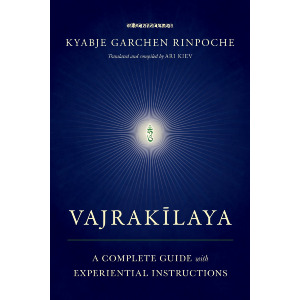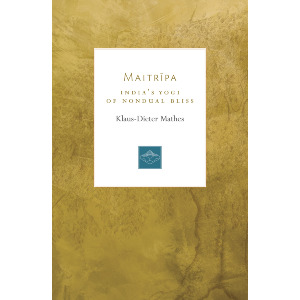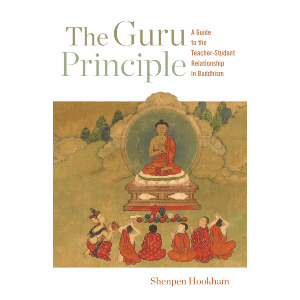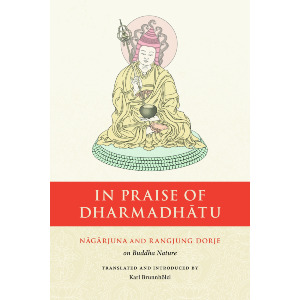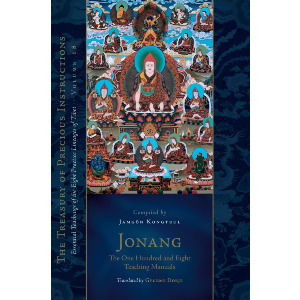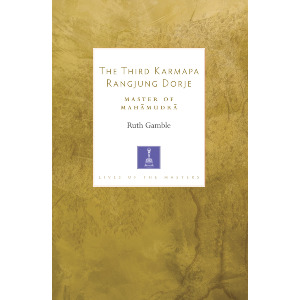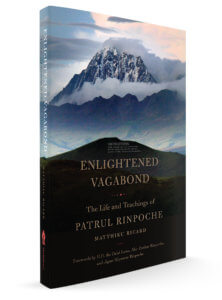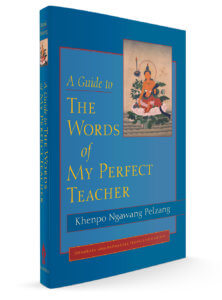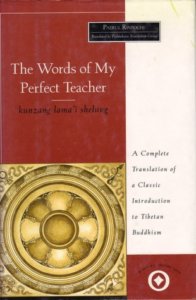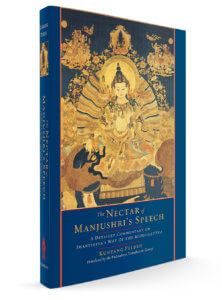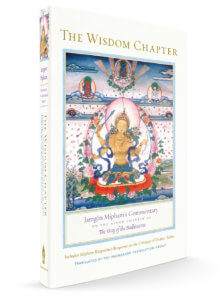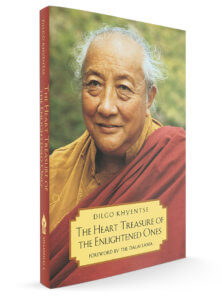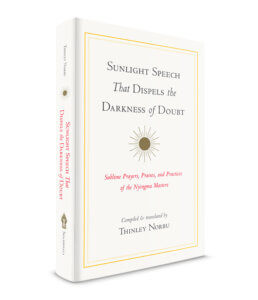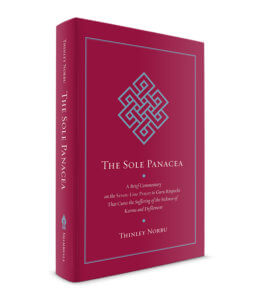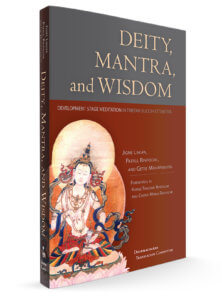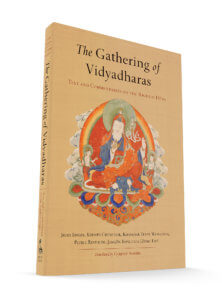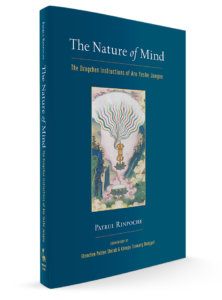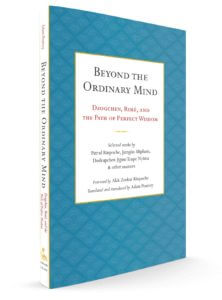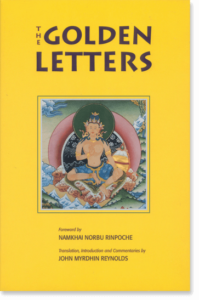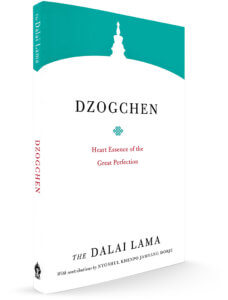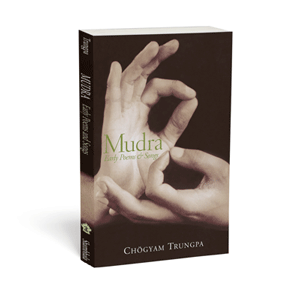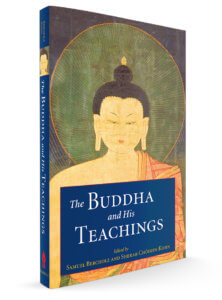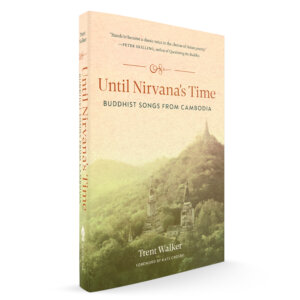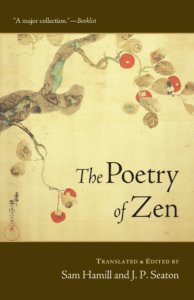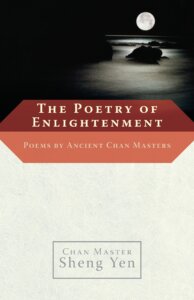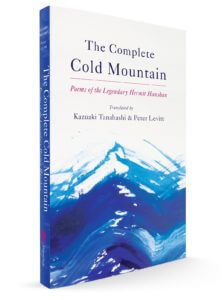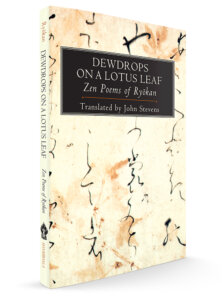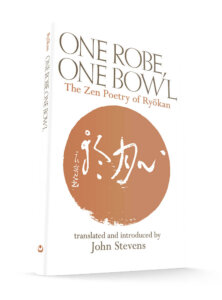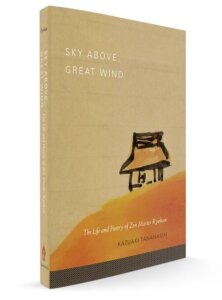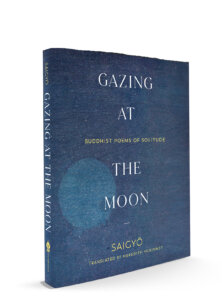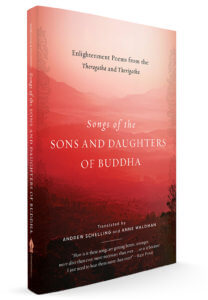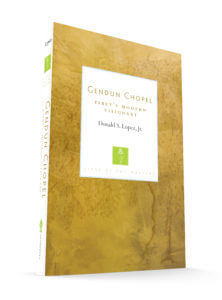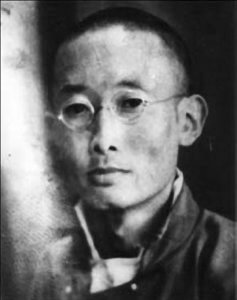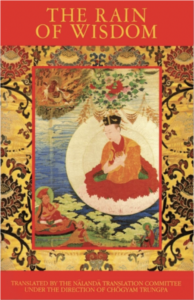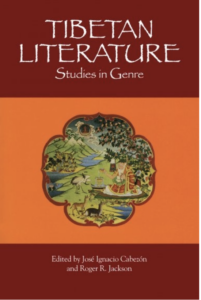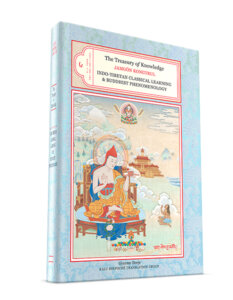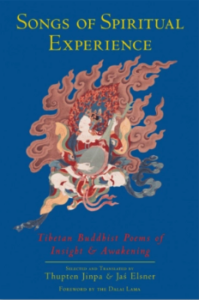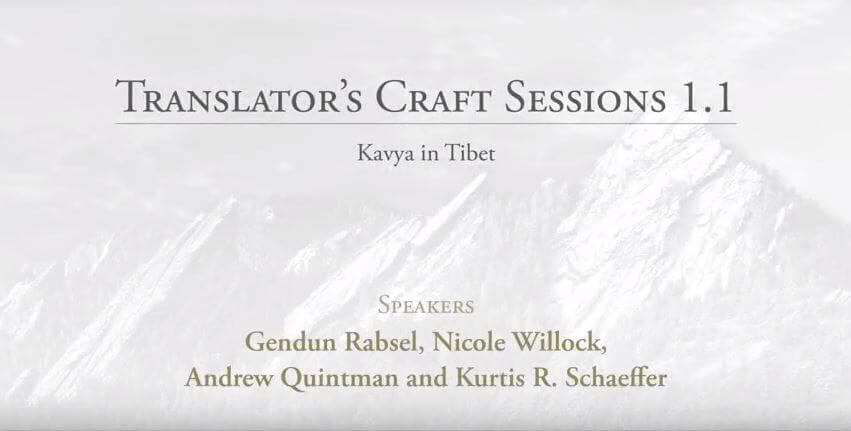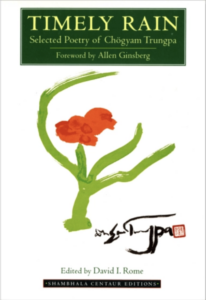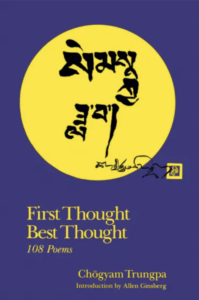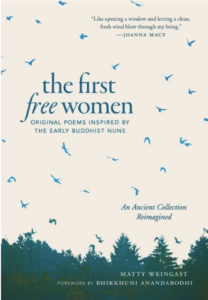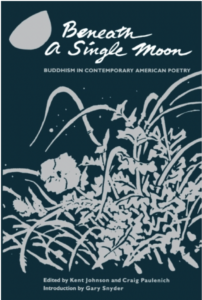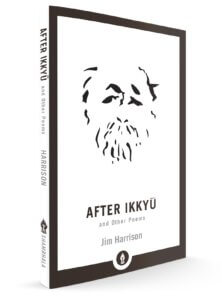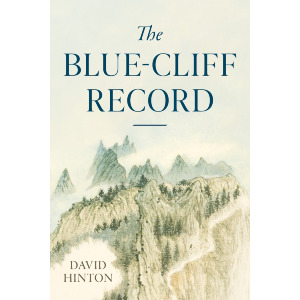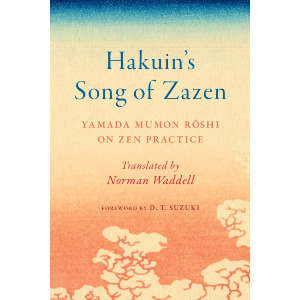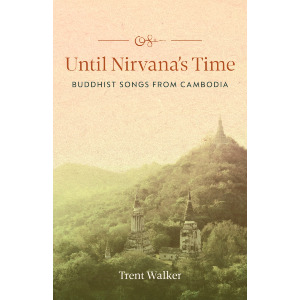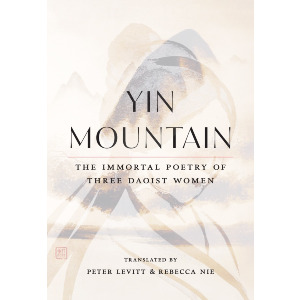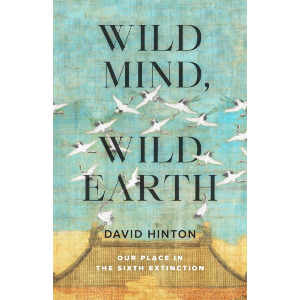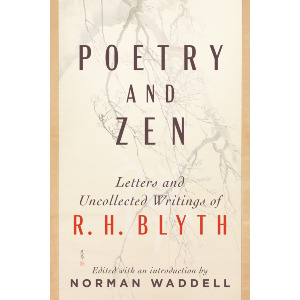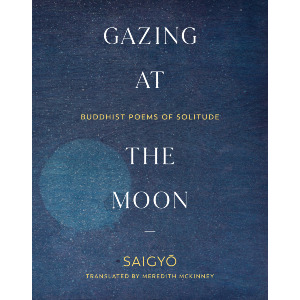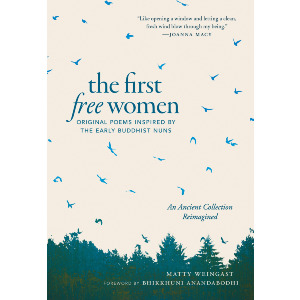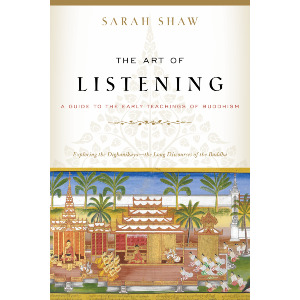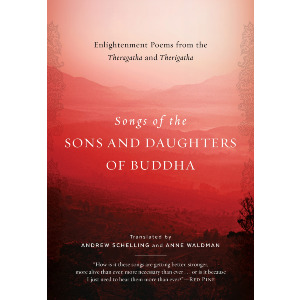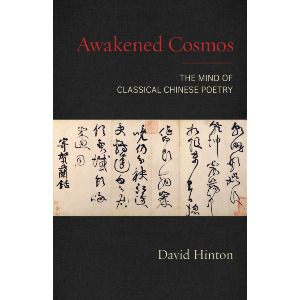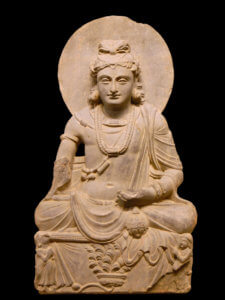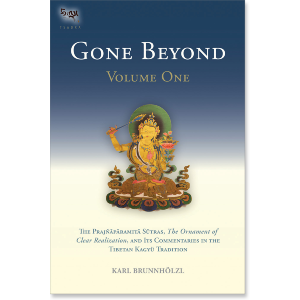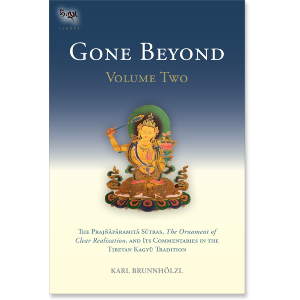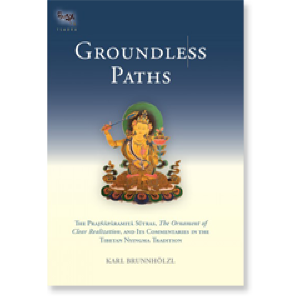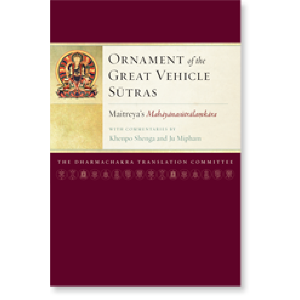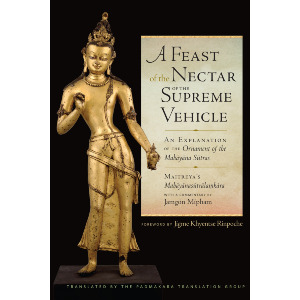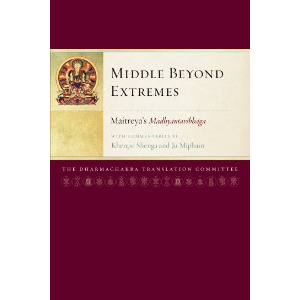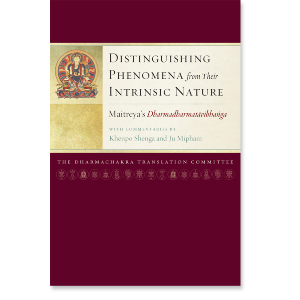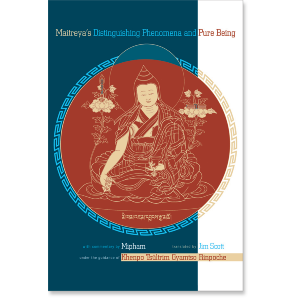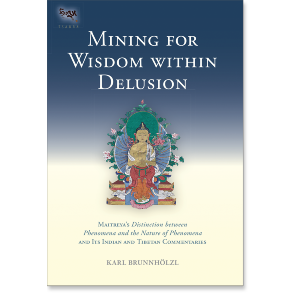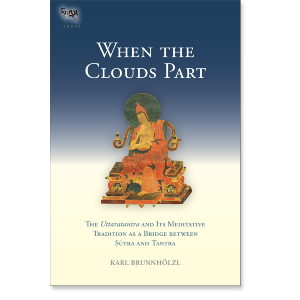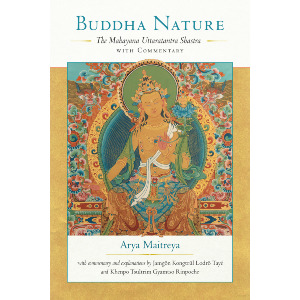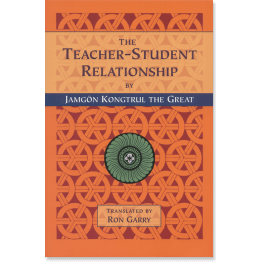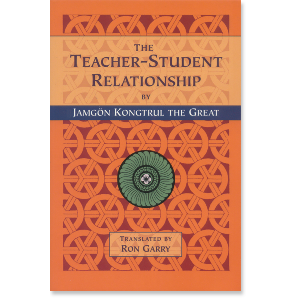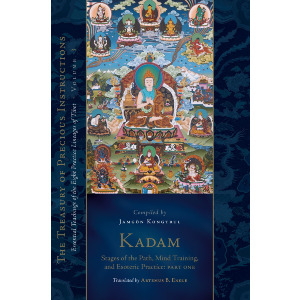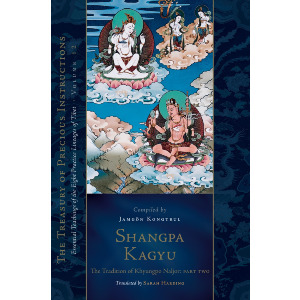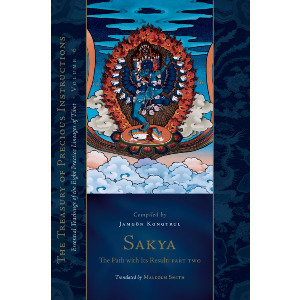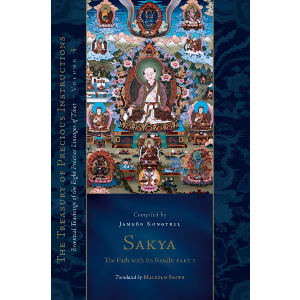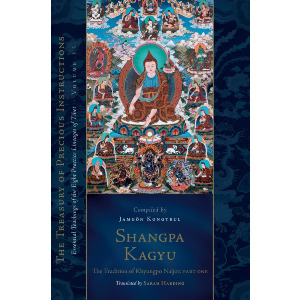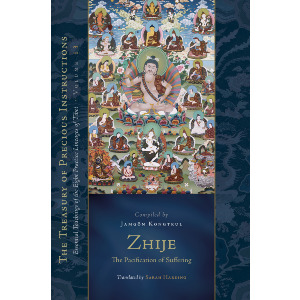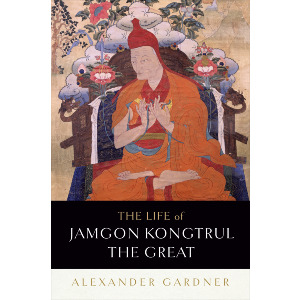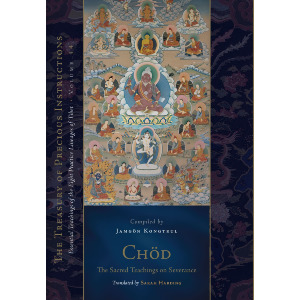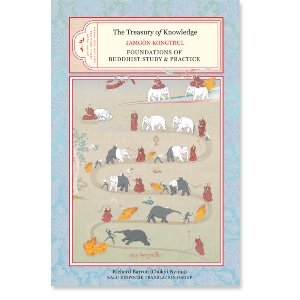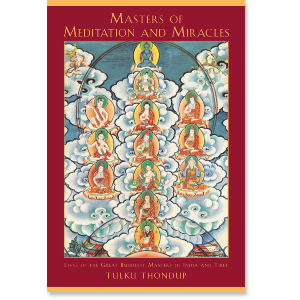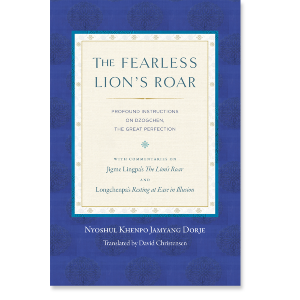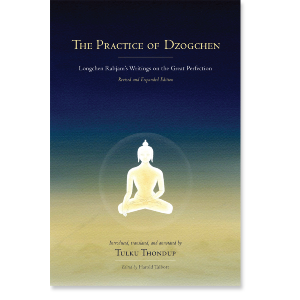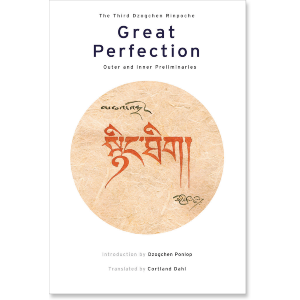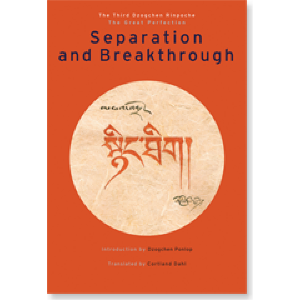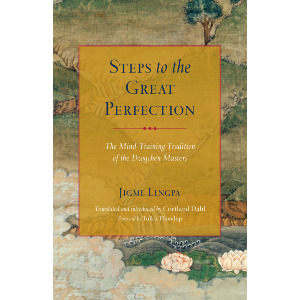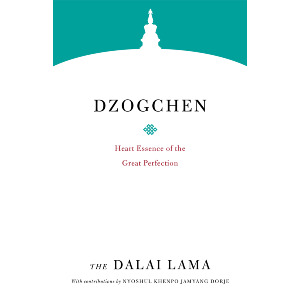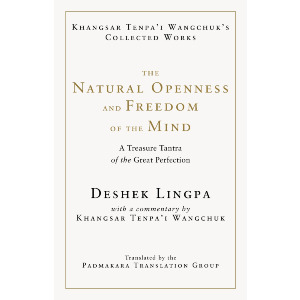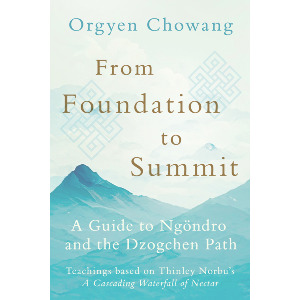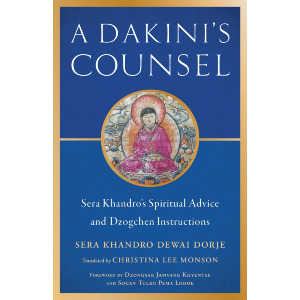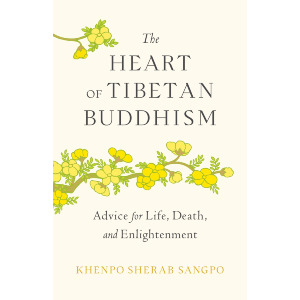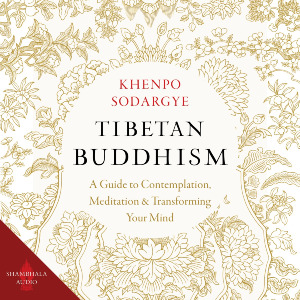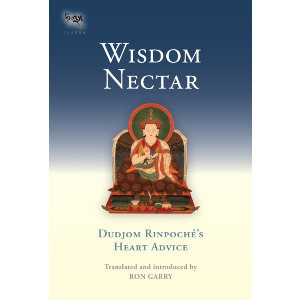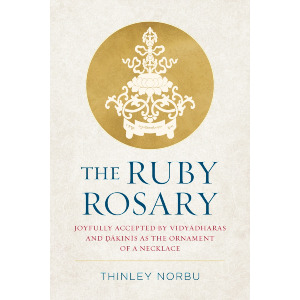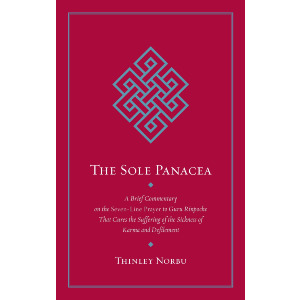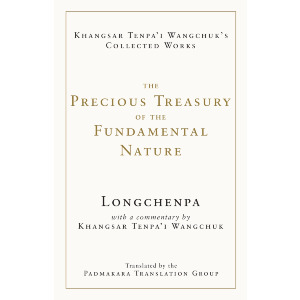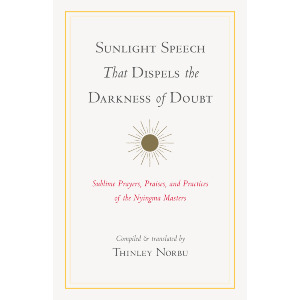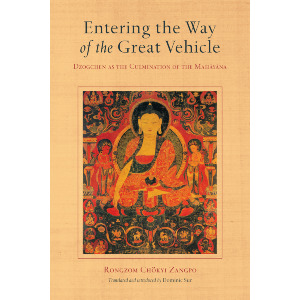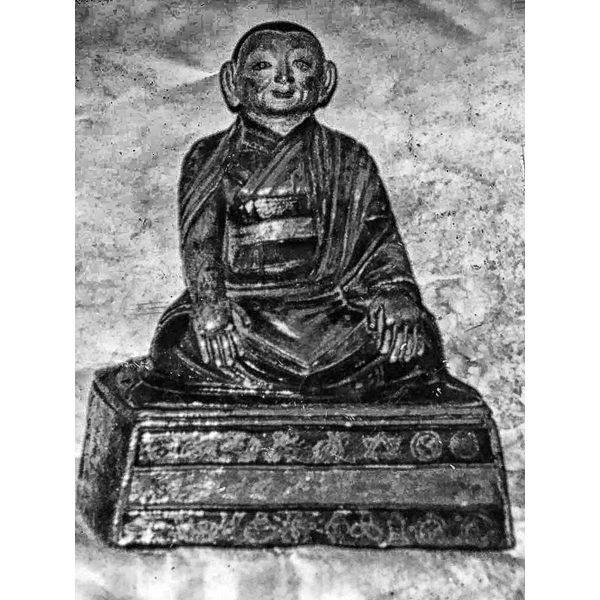

Patrul Rinpoche
Patrul Rinpoche (1808–1887) was one of the greatest Tibetan teachers of the nineteenth century. Famous for his precise and direct style, he shunned high monastic office and lived the life of a homeless wanderer, writing his book in a rustic hermitage under an overhanging rock.
Patrul Rinpoche
-
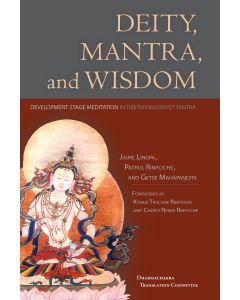 Deity, Mantra, and Wisdom$29.95- Paperback
Deity, Mantra, and Wisdom$29.95- PaperbackForeword by Chokyi Nyima Rinpoche
By Patrul Rinpoche
Foreword by Kyabje Trulshik Rinpoche
By Jigme Lingpa
By Getse Mahapandita Tsewang Chokdrub
Translated by Dharmachakra Translation Committee -
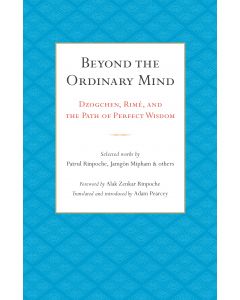 Beyond the Ordinary Mind$24.95- Paperback
Beyond the Ordinary Mind$24.95- PaperbackTranslated by Adam Pearcey
By Patrul Rinpoche
By Jamgon Mipham -
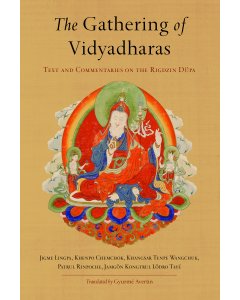 The Gathering of Vidyadharas$39.95- Paperback
The Gathering of Vidyadharas$39.95- PaperbackBy Jigme Lingpa
By Patrul Rinpoche
By Khenpo Chemchok
Translated by Gyurme Avertin
By Khangsar Tenpa'i Wangchuk
Contributions by Jamgon Kongtrul Lodro Taye
By Jamgon Kongtrul Lodro Taye -
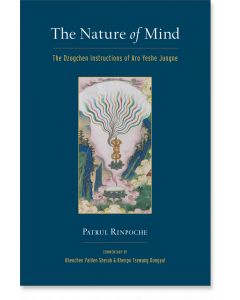 The Nature of Mind$21.95- Paperback
The Nature of Mind$21.95- Paperback -
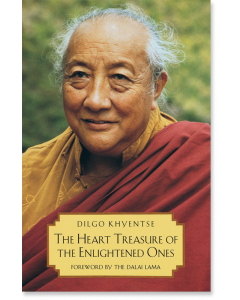 The Heart Treasure of the Enlightened Ones$24.95- Paperback
The Heart Treasure of the Enlightened Ones$24.95- PaperbackBy Dilgo Khyentse
Foreword by H.H. the Fourteenth Dalai Lama
Translated by Padmakara Translation Group
By Patrul Rinpoche
- Bestsellers Tibetan 1 item
- Buddhist Academic 1 item
- Buddhist Anthology 2item
- Buddhist Philosophy 2item
- Abhidharma 1 item
- Buddha Nature 1 item
- Deity Practice 3item
- Dzogchen 2item
- Gelug Tradition 1 item
- Dudjom Tersar 2item
- Longchen Nyingtik 2item
- Nyingma Tradition 4item
- Tantra 3item
- Terma / Treasure Texts 1 item
- Restricted Texts Requiring Prerequisites 1 item
GUIDES
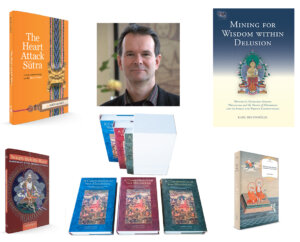
The Works of Karl Brunnhölzl: A Guide for Readers
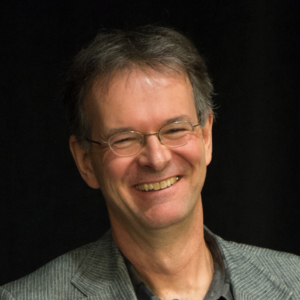
This guide for readers is dedicated to the works of author, translator, and teacher, Karl Brunnhölzl.
Originally trained as a physician, Karl Brunnhölzl later studied Tibetan language and Buddhist philosophy at the Marpa Institute for Translators and later the Nitartha Institute. Since 1989 he has been a translator and interpreter from Tibetan and English. He is presently involved with the Nitartha Institute as a teacher and translator.
Karl is well known among the Tibetan Buddhist community for his translations of some of the most widely known texts including works by Nagarjuna, Rangjung Dorje, as well as Five Maitreya Texts. Below you'll find an introduction to the selection of works found here at Shambhala Publications.
Texts and Commentary on the Prajñāpāramitā "Perfection of Wisdom" Sutras
The Prajñāpāramitā or "the Perfection of Wisdom" sutras are a collection of Mahāyana Buddhist scripture geared toward realizing the genuine nature of reality. The earliest texts that are included in the collection of Prajñāpāramitā sutras are believed to be from the 1st century BCE. Historically there have been a range of interpretations and schools of thought that derived from the Prajñāpāramitā sutras in India, most notably Madhyamaka and Yogācara, two distinct schools of thought stemming from Nāgārjuna and Asanga, respectively. Additional schools of thought have branched out from Madhyamaka and Yogācara, making their way to different regions of Asia including Japan, Tibet, China, and Korea.
In this reader guide we'll focus on the expansion of these two schools as they were explored in India and Tibet. As a Tibetan translator, interpreter, and practitioner in the Kagyu tradition, Karl Brunnhölzl offers of plethora of knowledge and experience enabling him to translate these complex and often dense philosophical texts from both the Madhyamaka and Yogācara tradition of Buddhism.
Perfection of Wisdom & the Five Maitreya Texts
According to the tradition, the Five Maitreya Texts were presented to Asanga by the bodhisattva Maitreya. These treatise include
1) The Ornament of Clear Realization (Abhisamayālaṃkāra)
2) The Ornament of the Mahayana Sutras (Māhayānasūtrālaṃkāra)
3) Distinguishing the Middle from the Extremes (Madhyāntavibhāga)
4) Distinguishing Phenomena from their Intrinsic Nature (Dharma-dharmatā-vibhāga)
5) The Sublime Continuum (Uttaratantra Śāstra)
Of the above treatise, Karl Brunnhölzl translated The Ornament of Clear Realization along with commentary from different schools of Tibetan Buddhism published as a trilogy (see below). Along the same vein, Brunnhölzl Compendium of Mahayana presents virtually everything anybody might want to know about the Yogācāra School of Mahāyāna Buddhism.
Abhisamayalamkara: The Ornament of Clear Realization
The Abhisamayalamkara summarizes all the topics in the vast body of the prajñaparamita sutras. Resembling a zip-file, it comes to life only through its Indian and Tibetan commentaries. Together, these texts not only discuss the "hidden meaning" of the prajñaparamita sutras—the paths and bhumis of sravakas, pratyekabuddhas, and bodhisattvas—but also serve as contemplative manuals for the explicit topic of these sutras—emptiness—and how it is to be understood on the progressive levels of realization of bodhisattvas. Thus these texts describe what happens in the mind of a bodhisattva who meditates on emptiness, making it a living experience from the beginner's stage up through buddhahood.
Groundless Paths
The Prajnaparamita Sutras, The Ornament of Clear Realization, and Its Commentaries in the Tibetan Nyingma Tradition
Translated by Karl Brunnhölzl
Groundless Paths contains the first in-depth study of the Abhisamayalamkara (the text studied most extensively in higher Tibetan Buddhist education) and its commentaries from the perspective of the Nyingma School of Tibetan Buddhism. This study consists mainly of translations of Maitreya's famous text and two commentaries on it by Patrul Rinpoche. These are supplemented by three short texts on the paths and bhumis by the same author, as well as extensive excerpts from commentaries by six other Nyingma masters, including Mipham Rinpoche. Thus this book helps close a long-standing gap in the modern scholarship on the prajñaparamita sutras and the literature on paths and bhumis in mahayana Buddhism.
Gone Beyond, Vol. 1 & Vol. 2
The Prajnaparamita Sutras, The Ornament of Clear Realization, and Its Commentaries in the Tibetan Kagyu Tradition
Translated by Karl Brunnhölzl
Gone Beyond contains the first in-depth study of the Abhisamayalamkara (the text studied most extensively in higher Tibetan Buddhist education) and its commentaries in the Kagyu School. This study (in two volumes) includes translations of Maitreya's famous text and its commentary by the Fifth Shamarpa Goncho Yenla (the first translation ever of a complete commentary on the Abhisamayalamkara into English), which are supplemented by extensive excerpts from the commentaries by the Third, Seventh, and Eighth Karmapas and others. Thus it closes a long-standing gap in the modern scholarship on the Prajnaparamita Sutras and the literature on paths and bhumis in mahayana Buddhism.
The first volume presents an English translation of the first three chapters of the Abhisamayalamkara and its commentary by the Fifth Shamarpa. The second volume presents an English translation of the final five chapters and its commentary by the Fifth Shamarpa.
In the video below listen to Karl Brunnhölzl discuss the trilogy on the Abhisamayalamkara: Groundless Paths and Gone Beyond Vol. 1 & 2.
Maitreya's Distinction between Phenomena and the Nature of Phenomena
Maitreya's Distinction between Phenomena and the Nature of Phenomena or Dharma-dharmatā-vibhaṅga is one of 13 core texts taught as part of monastic curriculum. The essential point of the text is, as the title entails, help a person distinguish between the illusory pheonemena of samsara and the ultimate reality, the nature of one's mind.
Mining for Wisdom within Delusion
Maitreya's Distinction between Phenomena and the Nature of Phenomena and Its Indian and Tibetan Commentaries
Translated by Karl Brunnhölzl
Maitreya’s Distinction between Phenomena and the Nature of Phenomena distinguishes the illusory phenomenal world of saṃsāra produced by the confused dualistic mind from the ultimate reality that is mind’s true nature. The transition from the one to the other is the process of “mining for wisdom within delusion.” Maitreya’s text calls this “the fundamental change,” which refers to the vanishing of delusive appearances through practicing the path, thus revealing the underlying changeless nature of these appearances. In this context, the main part of the text consists of the most detailed explanation of nonconceptual wisdom—the primary driving force of the path as well as its ultimate result—in Buddhist literature.
The Uttaratantra Śāstra "The Sublime Continuum"
The Uttaratantrashastra also called the Ratnagotravibhāga is another one of the 13 core texts studied in monastic shedras. In short, it is a commentary on the third turning of the wheel and focuses on the essential Buddhanature of all sentient beings.
When the Clouds Part
The Uttaratantra and Its Meditative Tradition as a Bridge between Sutra and Tantra
Translated by Karl Brunnhölzl
“Buddha nature” (tathāgatagarbha) is the innate potential in all living beings to become a fully awakened buddha. This book discusses a wide range of topics connected with the notion of buddha nature as presented in Indo-Tibetan Buddhism and includes an overview of the sūtra sources of the tathāgatagarbha teachings and the different ways of explaining the meaning of this term. It includes new translations of the Maitreya treatise Mahāyānottaratantra (Ratnagotravibhāga), the primary Indian text on the subject, its Indian commentaries, and two (hitherto untranslated) commentaries from the Tibetan Kagyü tradition. Most important, the translator’s introduction investigates in detail the meditative tradition of using the Mahāyānottaratantra as a basis for Mahāmudrā instructions and the Shentong approach. This is supplemented by translations of a number of short Tibetan meditation manuals from the Kadampa, Kagyü, and Jonang schools that use the Mahāyānottaratantra as a work to contemplate and realize one’s own buddha nature.
Additional Resources on the Five Maitreya Texts
The Mahāyānasaṃgraha "A Compendium of the Mahayana"
The Mahāyānasaṃgraha, published here with its Indian and Tibetan commentaries in three volumes, presents virtually everything anybody might want to know about the Yogācāra School of Mahāyāna Buddhism. It discusses in detail the nature and operation of the eight kinds of consciousness, the often-misunderstood notion of “mind only” (cittamātra), dependent origination, the cultivation of the path and its fruition in terms of the four wisdoms, and the three bodies (kāyas) of a buddha.
A Compendium of the Mahayana
Asanga's Mahayanasamgraha and Its Indian and Tibetan Commentaries
Translated by Karl Brunnhölzl
Volume 1 presents the translation of the Mahāyānasaṃgraha along with a commentary by Vasubandhu. The introduction gives an overview of the text and its Indian and Tibetan commentaries, and explains in detail two crucial elements of the Yogācāra view: the ālaya-consciousness and the afflicted mind (klistamanas).
Volume 2 presents translations of the commentary by Asvabhāva and an anonymous Indian commentary on the first chapter of the text. These translations are supplemented in the endnotes by excerpts from Tibetan commentaries and related passages in other Indian and Chinese Yogācāra works.
Volume 3 includes appendices with excerpts from other Indian and Chinese Yogācāra texts and supplementary materials on major Yogācāra topics in the Mahāyānasaṃgraha.
Perfection of Wisdom & Madhyamaka
Prajñāpāramitāhṛdaya "The Heart Sutra"
The Heart Sutra is a classic distillation of the Prajñāpāramitā Sutras, known for the famously stated "Form is emptiness, emptiness is form. Form is no other than emptiness, emptiness is no other than form"—a notable quotation in other Madhyamaka sutras and commentary. Often thought of as radical by some Buddhist thinkers, the Heart Sutra, along with the entire collection of Prajñāpāramitā Sutras pushes the barrier beyond conceptual thought through the doctrine of the two truths (relative and ultimate) pointing to the empty nature of outer and inner phenomena.
Brunnhölzl plays on this radical view of reality with the title of his commentary, The Heart Attack Sutra. To learn more about his choice of title check out the video below.
The Heart Attack Sutra
A New Commentary on the Heart Sutra
by Karl Brunnhölzl
The radical message of the Heart Sūtra, one of Buddhism's most famous texts, is a sweeping attack on everything we hold most dear: our troubles, the world as we know it, even the teachings of the Buddha himself. Several of the Buddha's followers are said to have suffered heart attacks and died when they first heard its assertion of the basic groundlessness of our existence—hence the title of this book. Overcoming fear, the Buddha teaches, is not to be accomplished by shutting down or building walls around oneself, but instead by opening up to understand the illusory nature of everything we fear—including ourselves. In this book of teachings, Karl Brunnhölzl guides practitioners through this 'crazy' sutra to the wisdom and compassion that lie at its core.
Madhyamaka in the Kagyu Tradition
While Brunnhölzl's above works present commentaries from a mix of Kagyu and Nyingma voices, the following works focus specifically on the Kagyu orientation to Madhyamaka.
The Center of the Sunlit Sky
Madhyamaka in the Kagyu Tradition
by Karl Brunnhölzl
Madhyamaka is a potent and universally accessible means of calming our suffering and awakening to our innate wisdom. The Center of the Sunlit Sky artfully rescues this brilliant teaching from its unwarranted reputation for intellectual opacity and reinstates it as a supremely practical tool kit for everyday living. The aim of this book is to take Madhyamaka out of the purely intellectual corner into which it unjustly gets boxed. It is an attempt to show how Madhayamaka actually addresses and works with all of our experiences in life.
The book follows the original Indian sources as well as the standard commentaries on Madhyamaka in the Kagyu School of Tibetan Buddhism. At the same time, these materials are adapted for a contemporary audience, combining the familiar sharpness of Madhyamaka reasonings (launching a massive assault on our cherished belief systems) with exploring the practical relevance of the Madhyamaka way of mind training.
Commentaries from the Third Karmapa, Rangjung Dorje
While the above books make a clearer distinction between the philosophcal traditions of Yogacara and Madhyamaka, Brunnhölzl also has two translations of works by the great Kagyu master Rangjung Dorje, the Third Karmapa. Indicative of the deeper levels of Kagyu philosophy and practice, the union of Yogacara and Madhyamaka represent some of the more subtle teachings of Mahayana Buddhism.
In Praise of Dharmadhatu
Nagarjuna and Rangjung Dorje on Buddha Nature
by Karl Brunnhölzl
Nāgārjuna's works sit at the heart of Mahāyāna Buddhist thought and practice, but he was renowned in Asia not only for his Madhyamaka work, but also his poetic collection of praises, most famously In Praise of Dharmadhatu. This book explores the scope, contents, and significance of Nāgārjuna’s scriptural legacy in India and Tibet, focusing primarily on this seminal work. The translation of Nāgārjuna’s hymn to buddha nature—here called dharmadhatu—shows how buddha nature is temporarily obscured in the experience of ordinary sentient beings, gradually uncovered through the path of bodhisattvas, and finally revealed in full bloom as buddhahood. Included is a translation of the text’s earliest and most extensive commentary by the Third Karmapa, Rangjung Dorje (1284–1339), supplemented by relevant excerpts from all other available commentaries.
Luminous Heart
Essential Writings of Rangjung Dorje, the Third Karmapa
by Karl Brunnhölzl
This extraordinary collection of writings on buddha nature by the Third Karmapa Rangjung Dorje (1284–1339) focuses on the transition from ordinary deluded consciousness to enlightened wisdom, the characteristics of buddhahood, and a buddha’s enlightened activity. The Third Karmapa’s unique and balanced view synthesizes Yogacara Madhyamaka and the classical teachings on buddha nature. Included are commentaries by Jamgön Kongtrul Lodrö Tayé that supplement the view of the Third Karmapa on two fundamental treatises on buddha nature, emphasizing the luminous empty mind of buddha nature as presented by the great Indian masters Maitreya and Asaṅga. For those practicing the sutrayāna and the vajrayāna in the Kagyü tradition, what these texts describe can be transformed into living experience.
Poetry, Song, and "Pith Instructions"
The last book for this reader's guide is a collection of teachings, songs of realization, and advice for practitioners on the path from both Indian and Tibetan masters.
Straight from the Heart
Buddhist Pith Instructions
by Karl Brunnhölzl
Straight from the Heart brings together an inspiring collection of Buddhist teachings, songs of realization, meditation instructions, and enlightened poetry—all chosen for their power to speak directly to the student. Drawn from Indian Mahayana and Vajrayana Buddhism as well as from all four schools of Tibetan Buddhism, some will impress with their beautiful poetry and powerful imagery, others with their profound power of instruction. Still others share personal advice for life that seems to come directly from the mouth of the author, and some serve as immediate and profound practice instructions. Several are just delightfully unconventional, even outrageous, letting in fresh air on petrified views or musty traditions. Most of them are simply unknown precious gems, which deserve a wider audience. Each of the works is preceded by a brief introduction and a short biography of its author. Many of these are legendary accounts of supernatural feats, edifying examples for students on the same spiritual path meant to expand their limited outlook with “mind-blowing” stories. Miraculous deeds, magnificent songs, and pithy instructions distinguish this collection assembled by the Buddhist scholar and translator Karl Brunnhölzl, whose years of work among dharma texts and his skill as a translator yield a rich mine of teachings all chosen for their ability to speak directly to the heart.
Explore More Articles and Reader's Guides
Recent Books Related to the Kagyu Tradition
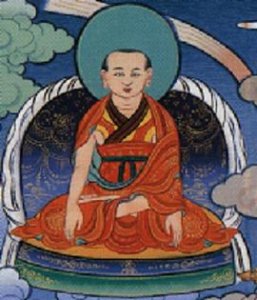
Patrul Rinpoche: A Reader's Guide

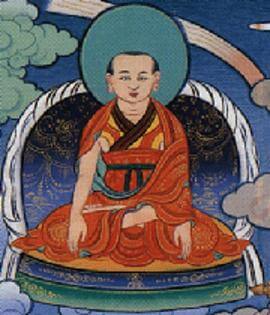
Praise to Patrul Rinpoche
Outwardly, you are the Son of the Victorious Ones, Shantideva.
Inwardly, you are the saint, the conqueror Shavaripa.
Secretly, you are the supreme sublime being Dug-ngal Rangdröl, actual self-liberator of the suffering of beings.
Jigme Chökyi Wangpo, I pray to you.
— by Jamyang Khyentse Wangpo, from Thinley Norbu Rinpoche's Sunlight Speech That Dispels the Darkness of Doubt
Jump To: His Life | Foundations | Propitious Speech | Mahayana | Tantra | Dzogchen | More
The Life of Patrul Rinpoche
Eastern Tibet in the nineteenth century was teeming with some of the most remarkable teachers to have walked on this earth.
Standing vividly out among them was Dza Patrul Orgyen Jigme Chökyi Wangpo, commonly known to us as Patrul Rinpoche. Considered one of the three main incarnations of Jigme Lingpa, the impact that this wandering yogi made on Buddhist practice cannot be overstated.
Biographical sketches of him can be found in Tulku Thondup's Masters of Meditation and Miracles, Khenpo Kunpel's A Vase of Nectar to Inspire the Faithful: A Biography of Patrul Rinpoche, Nyoshul Khen Rinpoche's A Marvelous Garland of Gems, Alak Zenkar Rinpoche's brief biography on Lotsawa House, and as several of the works listed below.
But perhaps the best place to start is in Matthieu Ricard's Enlightened Vagabond: The Life and Teachings of Patrul Rinpoche. Ricard has spent his life with some of the most amazing teachers of the 20th century, many of them heirs to the practice tradition of Patrul Rinpoche and the oral tradition preserving the stories of Patrul Rinpoche, which have been told since his days as a peripatetic wandering in the hills and mountains of eastern Tibet. This book is filled with stories and teachings that will make you laugh and cry and leave you in awe. It is an essential book for those inspired by Patrul Rinpoche's life, works, and wisdom.
What follows is a guide for readers to many of the works available in English by Patrul Rinpoche.
Foundations
The Foundations: Ngöndro
The Words of My Perfect Teacher, or Kunzang Lama'i Shelung, must be one of the most influential works to come out of Tibet. For westerners, the translations, first by Sonam Kazi and then later by the Padmakara Translation Group, have been instrumental in our Buddhist education. In this work Patrul Rinpoche puts to paper a long oral tradition on the preliminary or foundational practices, from the Four Thoughts that turn the mind to Dharma to refuge, bodhicitta, mandala offerings, purification relying on Vajrasattva, and Guru Yoga. It is full of stories that drive the points home in a way that go right to the reader's heart. Lamas have said that this book has a particular quality that rereading it nearly always gives the reader a new discovery. And revisiting it again and again is how it is meant to be used—this is not a work to check the box that you have read it, but for it to become part of the one studying it.
And to go even deeper with it, Kathog Khenpo Ngawang Pelzang, who received it in his youth from Patrul Rinpoche's heart disciple Lungtok Tenpai Nyima, wrote his Zintri, or notes, that form The Guide to the Words of My Perfect Teacher. This work presents the background for the teachings of the main work. For example Patrul Rinpoche's chapter on the Three Jewels corresponds to this work's in-depth exposition on the finer points of the Three Jewels and Patrul Rinpoche's chapter on the mandala offering is complemented by Khenpo's chapter on Buddhist cosmology. Together these two works provide a multi-faceted overview of how to practice.
The Mahayana
While Patrul Rinpoche is famed as a Dzogchen yogi, at the core of his practice was the Mahayana ideal of the bodhisattva, a path he truly lived. It is said that Patrul Rinpoche traveled alone, carrying two texts with him. The first was The Way of the Bodhisattva. The second was Nagarjuna's Root Stanzas of the Middle Way.
The Nectar of Manjusri's Speech: A Detailed Commentary on Shantideva's Way of the Bodhisattva
by Khenpo Kunzang Pelden, based on Patrul Rinpoche's teachings
While Patrul Rinpoche did not compose a work on the Way of the Bodhisattva, he taught it constantly, over one hundred times from beginning to end. It had fallen into disuse outside a few monastic centers, and it is thanks to Patrul Rinpoche this text became integral to all the schools of Tibetan Buddhism. Luckily for us, one of his most dedicated students, Khenpo Kunzang Pelden or Khenpo Kunpel, compiled these teachings he received from Patrul Rinpoche and composed The Nectar of Manjusri's Speech: A Detailed Commentary on Shantideva's Way of the Bodhisattva.
The Wisdom Chapter
by Mipham Rinpoche, based on teachings he received from Patrul Rinpoche
Patrul Rinpoche, also imparted teachings to Mipham Rinpoche, who based his understanding on these when he wrote his commentary on the famous (and famously challenging) ninth chapter of The Way of the Bodhisattva, now translated as The Wisdom Chapter.
Groundless Paths: The Prajnaparamita Sutras, The Ornament of Clear Realization, and Its Commentaries in the Tibetan Nyingma Tradition
by Karl Brunnholzl, with extensive translations and analysis of Patrul Rinpoche's work
On the Abhisamayālaṃkāra, one of the Five Maitreya Texts imparted to Asanga by Maitreya himself, Patrul Rinpoche wrote seven texts, the main two of which are The General Topics on the Abhisamayālaṃkāra and A Word Commentary on the Abhisamayālaṃkāra. What will be surprising for some, the bulk of these two works are, in the honored Tibetan tradition of honoring the words of past masters, is almost entirely excerpts from Tsongkhapa's commentary on the text, The Golden Garland of Explanations.
A distillation (if a 900 page work can be called that) of Patrul Rinpoche's works on this text, are what forms the bulk of Groundless Paths: The Prajñāpāramitā Sūtras, The Ornament of Clear Realization, and Its Commentaries in the Tibetan Nyingma Tradition
Watch scholar and translator Karl Brunnholzl discuss the trilogy of commentaries on Prajaparamita, of which Groundless Paths, heavily focused on Patrul Rinpoche, is the third volume.
The Speech Virtuous in the Beginning, Middle, and End
The Speech Virtuous in the Beginning, Middle, and End, one of the most influential works of Patrul Rinpoche, is included is included in whole or in part in several books. Patrul Rinpoche wrote this while staying in a remote cave not far from the Tibetan-Chinese border. In this work, be pulls the rug from under our normal way of being, so full of deceit and hypocrisy. He concludes that only by turning away from an ordinary life and pursuing the path of Buddhism. He then outlines the preliminary practices, the development and completion stages of tantric practice, and finally the practices of Mahamudra and Dzogchen. This text is full of the wisdom, humor, and directness that characterize all of Patrul Rinpoche's works, but it is unique in that it is meant to be memorized, making its message easy to bring right into our hearts.
The Heart Treasure of the Enlightened Ones
The Practice of View, Meditation, and Action
A commentary on Patrul Rinpoche's teachings by Dilgo Khyentse Rinpoche
In the accompanying commentary to Patrul Rinpoche's root text, Dilgo Khyentse Rinpoche (1910–1991)—lineage holder of the Nyingma school and one of the great expounders of the Dharma in Europe and North America—expands upon the text with his characteristic compassion and uncompromising thoroughness. Patrul Rinpoche's fresh and piercing verses combined with Khyentse Rinpoche's down-to-earth comments offer a concise yet complete examination of the Buddhist path.
Sunlight Speech That Dispels the Darkness of Doubt
Sublime Prayers, Praises, and Practices of the Nyingma Masters
Trasnlated by Thinley Norbu Rinpoche
Another superb translation of the root text of Patrul Rinpoche's The Practice of the View, Meditation, and Action, Called “The Sublime Heart Jewel”, The Speech Virtuous in the Beginning, Middle, and End is included in Thinley Norbu Rinpoche's collection of translations entitled Sunlight Speech That Dispels the Darkness of Doubt. This text presents advice to practitioners on the path to enlightenment, which is all contained in the three aspects of the correct view, meditation, and action, synthesized in the practice of the Six-Syllable Mantra of Avalokiteshvara.
Two poems of Patrul Rinpoche are included in what in the mind of your author here is one of the most extraordinary anthologies of Tibetan Buddhism: Straight from the Heart: Buddhist Pith Instructions.
The first poem is an excerpt from Speech That Is Virtuous (see the entry from Sunlight Speech in this article) and the translator has titled it Afflictions Are Wisdom, the Skandhas Are Avalokitesvara. The second is The Crucial Point of Practice.
Sole Panacea
A Brief Commentary on the Seven-Line Prayer to Guru Rinpoche That Cures the Suffering of the Sickness of Karma and Defilement
by Thinley Norbu Rinpoche
Thinley Norbu Rinpoche also quotes this at length in Sole Panacea: A Brief Commentary on the Seven-Line Prayer to Guru Rinpoche That Cures the Suffering of the Sickness of Karma and Defilement.
Tantra
Patrul Rinpoche wrote multiple works on tantric practice, several of which have been translated into English.
Deity, Mantra, and Wisdom
Development Stage Meditation in Tibetan Buddhist Tantra
by Patrul Rinpoche, Jigme Lingpa, and Getse Mahapandita Tsewang Chokdrub
Patrul Rinpoche wrote two extremely helpful texts on generation stage practice which are included in Deity, Mantra, and Wisdom.
The first is Clarifying the Difficult Points in the Development Stage and Deity Yoga and is meant to be a companion piece to Jigme Lingpa's Ladder to Akanishta which accompanies it in this volume. As the translators explain, "Expanding on the presentation given in Ladder to Akaniṣṭha, he highlights some of the more obscure issues addressed by Jigme Lingpa and clarifies the latter’s presentation. In addition to his clarification of difficult issues, Patrul also stresses the importance of compassion and the view of emptiness in the context of tantric practice."
The second text by Patrul Rinpoche in this volume is The Melody of Brahma Reveling in the Three Realms: Key Points for Meditating on The Four Stakes That Bind the Life-Force. These Four Stakes are absorption, essence mantra, unchanging realization, and projection and absorption. Patrul Rinpoche lists they key points associated with each of the four. Together, they form an essential framework in development stage practice according to the Nyingma tradition.
Hear Dharmachakra Translation Committee member Andreas Doctor discuss this book, its background and their teacher Chokyi Nyima Rinpoche's encouragement to bring this important work to a western readership.
The Gathering of Vidyadharas
Text and Commentaries on the Rigdzin Düpa
By Jigme Lingpa, Patrul Rinpoche, Khenpo Chemchok, Kangsar Tenpe Wangchuk, and Jamgon Kongtrul Lodro Taye
Translated by Gyurme Avertin
These Four Stakes discussed above, central as they are to the Nyingma tradition, are unsurprisingly essential in the Lonchen Nyingtik lineage. The the main lama practice is the Rigdzin Düpa, or Gathering of the Vidydharas, a practice centered on Guru Rinpoche Padmasmbhava and other awareness holders. One of the translations of this volume is by Khangsar Tenpe Wangchuk which is a commentary on Patrul Rinpoche's Melody of Brhama discussed above, and Padmasambhava'a Garland of Views.
The following text in the volume is a short one authored by Patrul Rinpoche himself, and is titled A Clearly Reflecting Mirror: Chöpön Activities for the Rigdzin Düpa, the Inner Sadhana of the Longchen Nyingtik Cycle. This is a ritual manual for a multi-day drupchö intensive practice. It covers arranging the mandala, the Rigdzin Düpa torma, Fulfillment-and-Confession torma, the Dharmapala tormas, additional offerings, various offering activities for the attendants, tsok, remainders, Dharmapala practice, the horse dance, offerings, and prayers for auspiciousness.
Hear Matthieu Ricard discuss Patrul Rinpoche's advice on meditative progress and experiences
Dzogchen, the Great Perfection
All of Patrul Rinpoche's works regardless of the subject are imbued with the view of Dzogchen. However, he authored many works explicitly on this system of practice.
Primordial Purity
Oral Instructions on the Three Words That Strike the Vital Point
By Patrul Rinpoche and Dilgo Khyentse Rinpoche
One of Patrul Rinpoche's most famous Dzogchen texts is The Three Words That Strike the Vital Point, itself based on a short work by the early Dzogchen master Garab Dorje which he had imparted to Manjusrimitra. This text, along with a commentary by Dilgo Khyentse Rinpoche is included in Primordial Purity. This work is an overview of the view, meditation, and action of Dzogchen. As Khyentse Rinpoche explains, these are not ordinary teaching:
"If you practice accordingly, you cannot help but be liberated. It will not be enough, however, just to practice for one or two days. In such a short time, we cannot break through our confusion. Even though you cannot spend your whole life continuously practicing in solitary retreat, please do as much practice as you can every day. As it is said, 'A collection of drops can become an ocean.' Since the teaching becomes more and more profound through continuous practice, confusion will naturally be purified, and all good qualities will spontaneously unfold. Those are the key instructions of the gurus of the three lineages."
The Nature of Mind
The Dzogchen Instructions of Aro Yeshe Jungne
by Patrul Rinpoche, Khenpo Palden Sherab, and Khenpo Tsewang Dongyal
The Nature of Mind: The Dzogchen Instructions of Aro Yeshe Jungne is a commentary on a fascinating text by Patrul Rinpoche by the Khenpo brothers Palden Sherab and Tsewang Dongyal. It is centered around a translation of Patrul Rinpoche's Clear Elucidation of True Nature: An Esoteric Instruction on the Sublime Approach of Ati. This text Patrul put together to encapsulate all the teachings from the Aro tradition in a single short text. It is a pithy guide to discovering the nature of your own mind and gives explicit instructions on how to do so for those of us of superior, middling, and lesser capabilities. It is superb.
Beyond the Ordinary Mind
Dzogchen, Rimé, and the Path of Perfect Wisdom
Translated by Adam Pearcey
Beyond the Ordinary Mind, an extraordinary collection of profound advice on Dzogchen from many great masters, compiled and translated Adam Pearcey, the force behind Lotsawa House. The piece by Patrul Rinpoche is called Uniting Outer and Inner Solitude: Advice for Alak Dongak Gyatso. Alak Dongak Gyatso was a student of Patrul Rinpoche and Pearcey tells a few stories about this somewhat elusive figure who was on the losing end of the stick in a debate with Mipham Rinpoche and writes that this work,
"is more than just a poem of advice on the importance of remaining in solitude. It offers Patrul Rinpoche’s views on a subject close to his own heart: he spent most of his life in retreat and even wrote this text while residing in 'the mountain solitude of Dhichung.' But it is also one of the few surviving textual clues to the mysterious life of Alak Dongak. And if we read it as a moving attempt to console a dear but despondent disciple, then it has a further dimension, as an encouragement to respond to an ordinary human situation by transcending ordinary human limitations."
The Golden Letters
The Tibetan Teachings of Garab Dorje, First Dzogchen Master
by Garab Dorje, translated by John Myrdhin Reynolds
The Golden Letters: The Tibetan Teachings of Garab Dorje, First Dzogchen Master includes a work by Patrul Rinpoche entitled The Special Teaching of the Wise and Glorious King, a four page poem followed by a more extensive auto-commentary.
Dzogchen
Heart Essence of the Great Perfection
by His Holiness the Dalai Lama
His Holiness teaches on Patrul Rinpoche's commentary to Garab Dorje's famous Three Words That Strike the Vital Point, also using other texts such as Longchenpa's Cho Ying Dzod, or Treasury of Dharmadhatu. His Holiness says,
Fundamentally, no matter who we are, whether we meditate or not, the self-arising wisdom of rigpa is already primordially present, and we have never strayed from it. Then there is rigpa as it is directly introduced to us by a master, on the basis of our personal practice. The nature of rigpa in both cases is identical—it is uncontrived rigpa—but in the one case it is simply so, without having been directly introduced, while in the other case we are recognizing our true nature for what it is. So one can talk about rigpa in two ways. But actually, there are not two things, one reuniting and another being reunited. The direct introduction to what is naturally present as the ground of being is metaphorically called “reuniting mother and child.
Mudra: Early Poems and Songs
by Chogyam Trungpa
The first section of this book is a translation of a four page poem by Patrul Rinpoche addresses to the adept Abushri. It is a beautiful piece of advice that cannot fail to move the reader.
Patrul Rinpoche wrote a short work called Chase Them Away! which was translated by Herbert Guenther. This is included in the anthology The Buddha and His Teachings. It appears this work was written when he was an old man as it is a reflection of his life, looking back and telling us "like it is". It reflects the wisdom from a life dedicated to practice and benefiting others. Here is one of the verses:
Chase Them Away!
When first I saw wealth,
I had the feeling of momentary joy
Like a child gathering flowers:
That's what is meant by not hoarding riches and wealth.
When later I saw wealth,
I had the feeling of there never being enough
Like water being poured into a pot with a broken bottom:
That's what is meant by making small efforts to gain something.
When now I see wealth,
I have the feeling of its being a heavy burden
Like an old beggar with too many children:
That's what is meant by rejoicing in having nothing.
Additional Resources
There are three excellent sources for more on Patrul Rinpoche.

![]() The Treasury of Lives also has a biography of Patrul Rinpoche among its collection of Tibetan figures.
The Treasury of Lives also has a biography of Patrul Rinpoche among its collection of Tibetan figures.
And for Tibetan readers, TBRC/BDRC of course provides downloadable pdfs of Patrul Rinpoche's works in Tibetan.
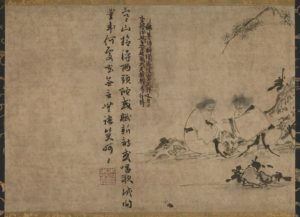
Buddhist Poetry - A Reader Guide

A Reader Guide
Jump to sections on this page:
Recent Releases | Chan and Zen Poetry | Indian Poetry | Tibetan Poetry | Southeast Asian Poetry | Contemporary Buddhist Poetry
Recent Releases
Until Nirvana's Time: Buddhist Songs from Cambodia
By Trent Walker
Until Nirvana’s Time presents forty-five Dharma songs, whose soaring melodies have inspired Cambodian Buddhist communities for generations. Whether recited in daily prayers or all-night rituals, these poems speak to our deepest concerns—how to die, how to grieve, and how to repay the ones we love.
Introduced, translated, and contextualized by scholar and vocalist Trent Walker, this is the first collection of traditional Cambodian Buddhist literature available in English. Many of the poems have been transcribed from old cassette tapes or fragile bark-paper manuscripts that have never before been printed. A link to recordings of selected songs in English and Khmer accompanies the book.
Click here to listen to songs from the book, performed by Trent Walker.
Chan and Zen Poetry
The Poetry of Zen, edited by Sam Hamill & J.P. Seaton
Here, poet-translators Sam Hamill and J.P. Seaton offer up a rich sampling of poems from the Chinese and Japanese Zen traditions, spanning centuries of poets, from Lao Tzu to Kobayashi Issa. While a few of the poets included were not Zen practitioners, their poems nonetheless illustrate a strong Zen influence. Hamill and Seaton open the anthology with an overview of the Zen poetic tradition, and provide historical, philosophical, and biographical context to the works throughout, showing readers how poetry “is one of the many paths to enlightenment” (7). With a compact trim size, this collection makes a wonderful travel companion.
Poetry from Chinese Chan Masters
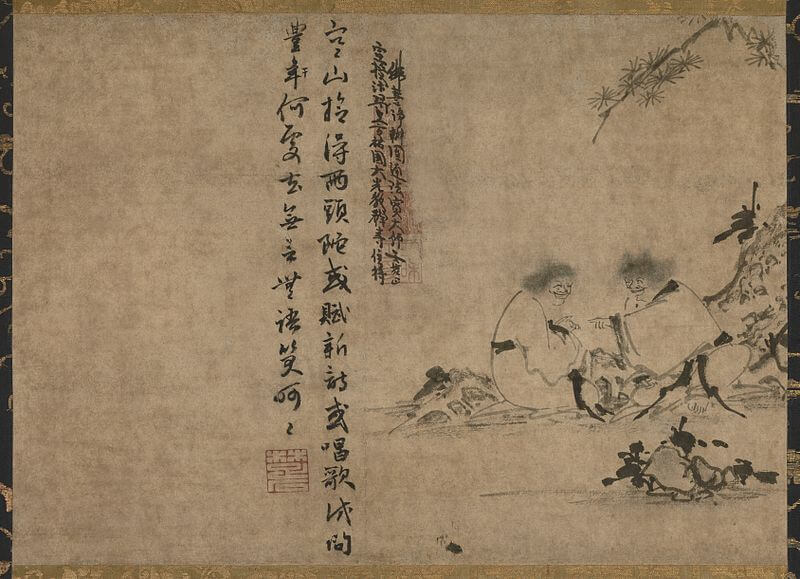
By Indara (因陀羅) (Yintuoluo) (Emuseum) [Public domain or Public domain], via Wikimedia Commons
The Poetry of Enlightenment: Poems by Ancient Chan Masters, by Chan Master Sheng Yen
Look inside the minds of enlightened masters with this collection of Ch’an teaching poems. Chan Master Sheng Yen offers commentary on ten poems by ancient Chinese Ch’an masters, selected both for their simplicity of language and depth of meaning. Written by Ch’an practitioners post-enlightenment, these poems touch on the experience of Ch’an, how to practice, cultivating the right attitude, and obstacles to avoid, as well as offering a glimpse into the state of mind of enlightenment.
The Complete Cold Mountain: Poems of the Legendary Hermit Hanshan, translated by Kazuaki Tanahashi & Peter Levitt
Capturing readers with its insightful, light, humorous, and often rebellious spirit, Hanshan’s Cold Mountain poems have long been enjoyed by Buddhists and non-Buddhists alike. This new translation of these centuries-old writings by Kaz Tanahashi and Peter Levitt presents readers not only the full body of poems in its entirety, but also provides a wealth of insight into the poets behind the poems, full Chinese text of the poems, historical context, and the Buddhist elements present throughout the collection. The translators’ deep appreciation for Hanshan shines through the collection. Translator Peter Levitt notes in the introduction, “Because of the compassionate discernment, profound tranquility, unexpected insight, and the occasional outrageous humor of his poetry, Kaz Tanahashi and I have gratefully considered Hanshan one of life’s treasured companions for fifty years. As a result of the kinship we feel with him, we gathered together, translated, and now offer readers the most complete version of the poet’s work to date in the English language” (2).
Poetry from Japanese Zen Masters
The Poetry of Ryokan
Widely admired both for his character and poetry, Ryokan remains one of the key poets of the Zen tradition. Though written in eighteenth century Japan, Ryokan’s poems seem to transcend time and space, with reflections on the human experience that are as relevant to today’s readers as they were centuries ago.
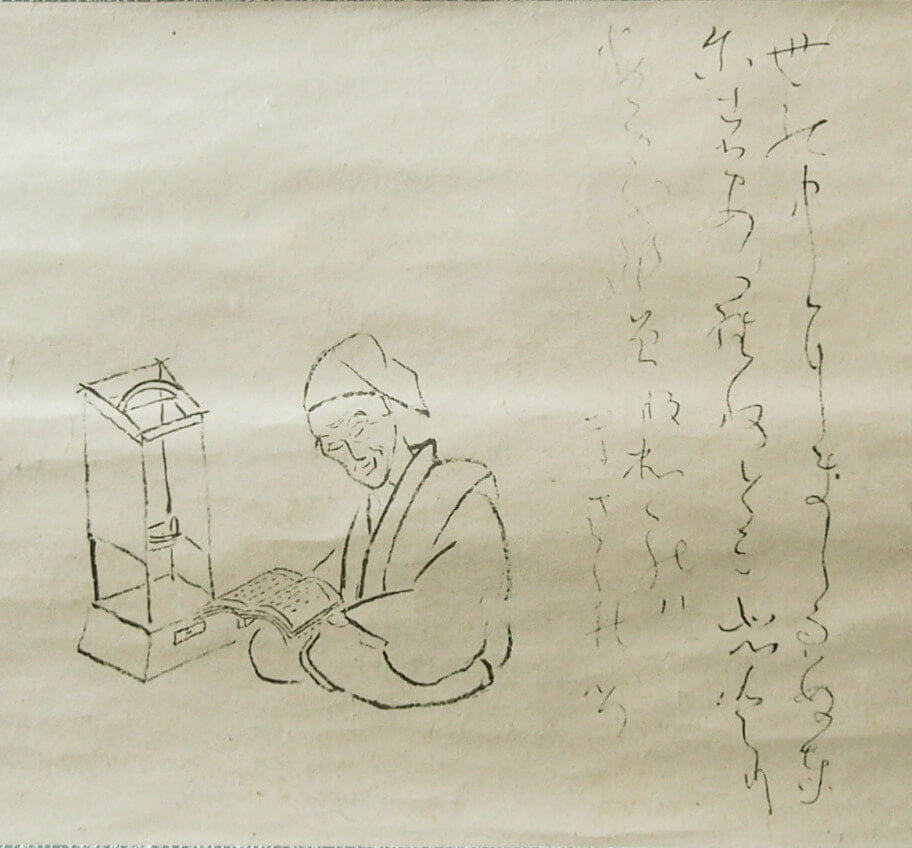
“Who says my poems are poems?
My poems are not poems.
When you know that my poems are not poems,
Then we can speak of poetry!”
*Image by Ryōkan (English: Replica before 1970) [Public domain], via Wikimedia Commons
$18.95 - Paperback
Dewdrops on a Lotus Leaf: Zen Poems of Ryokan, translated & edited by John Stevens
Providing brief biographical context, John Stevens introduces us to the world and work of Ryokan. The collection demonstrates the spirit of Ryokan’s Zen outlook, with poems covering the full spectrum of the human experience and focusing on “things deep inside the heart.” Throughout the text are ink paintings by Koshi no Sengai, a devotee of Ryokan, many of which include calligraphy of Ryokan’s verses.
$19.95 - Paperback
One Robe, One Bowl: The Zen Poetry of Ryokan, translated & introduced by John Stevens
In comparison to Dewdrops, this collection offers a more detailed introduction to the life of Ryokan and his relationship to Zen Buddhism. Ryokan was not married to one poetic style, and thus this collection is broken up into classical Chinese style poems, and Japanese waka and haiku, organized by season.
$18.95 - Paperback
Sky Above, Great Wind: The Life and Poetry of Zen Master Ryokan, translated by Kazuaki Tanahashi
For readers who want to take a really deep dive into Ryokan, this is the collection to read. Not only does Tanahashi present Ryokan’s poetry (organized chronologically), but he also offers selections of Ryokan’s calligraphy, maps of relevant sites for readers’ reference, a detailed biographical introduction, notes on individual poems, an analysis of Ryokan’s poetic forms, and a collection of anecdotes about the beloved Zen poet.
The Poetry of Saigō
Saigyō, the Buddhist name of Fujiwara no Norikiyo (1118–1190), is one of Japan’s most famous and beloved poets. He was a recluse monk who spent much of his life wandering and seeking after the Buddhist way. Combining his love of poetry with his spiritual evolution, he produced beautiful, lyrical lines infused with a Buddhist perception of the world.
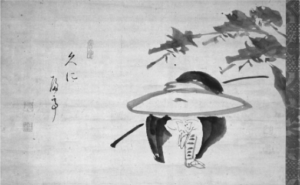
This world—
strug jewels
of dew
on the frail thread
a spider spins.
Gazing at the Moon: Buddhist Poems of Solitude, translated by Meredith McKinney, presents over one hundred of Saigyō’s tanka—traditional 31-syllable poems—newly rendered into English by renowned translator Meredith McKinney. This selection of poems conveys Saigyō’s story of Buddhist awakening, reclusion, seeking, enlightenment, and death, embodying the Japanese aesthetic ideal of mono no aware—to be moved by sorrow in witnessing the ephemeral world.
Check out the interview with Meredith McKinney on the Books on Asia Podcast!
Indian Buddhist Poetry
Songs of the Sons and Daughters of Buddha: Enlightenment Poems from the Theragatha and Therigatha, translated by Andrew Schelling and Anne Waldman
More than two thousand years ago, the earliest disciples of the Buddha put into verse their experiences on the spiritual journey—from their daily struggles to their spiritual realizations. Over time the verses were collected to form the Theragatha and Therigatha, the “Verses of Elder Monks” and “Verses of Elder Nuns” respectively. Renowned poets Andrew Schelling and Anne Waldman have translated the most poignant poems in these collections, bringing forth their visceral, immediate qualities.
Tibetan Buddhist Poetry
Gendun Chopel: Tibet’s Modern Visionary, by Donald S. Lopez Jr.
The debut title in Shambhala’s Lives of the Masters series, Gendun Chopel offers an in-depth look at the life and writings of the Tibetan Buddhist visionary, by scholar Donald Lopez. While much of this book is a biographical exploration of Gendun Chopel, Lopez also provides a wealth of Gendun Chopel’s writings, believing that “one learns a great deal about an author by actually reading what they wrote” (x). More than a Buddhist visionary, Gendun Chopel is considered one of Tibet’s greatest poets of the twentieth century, and thus included among these writings is a significant selection of poetry. As a student and writer of poetry throughout his life, he mastered many poetic forms, and often composed poems spontaneously.
The relatives and servants we meet are but guests on market day.
The rise of power, wealth, and arrogance are pleasures in a dream.
Happiness alternates with sorrow, summer changes to winter.
Thinking of this, a song spontaneously came to me.
$39.95 - Paperback
The Rain of Wisdom: The Essence of the Ocean of True Meaning, translated by the Nalanda Translation Committee
Translated under the direction of Chogyam Trungpa Rinpoche, this collection offers more than one hundred vajra dohas of the Tibetan Kagyu lineage, by more than thirty lineage holders, including Tilopa, Milarepa, and the Sixteenth Gyalwa Karmapa. Contained in these songs are teachings on karma, bodhicitta, devotion, and the Buddhist path. Trungpa Rinpoche writes in his Foreword, “these songs should be regarded as the best of the butter which has been churned from the ocean of milk of the Buddha’s teachings” (xiii).
$39.95 - Paperback
Tibetan Literature: Studies in Genre
Renowned scholar Roger Jackson takes on the subject in the chapter ‘Poetry in Tibet: Glu, mGur, sNyan ngag and “Songs of Experience”. He explores Tibetan poetry from its earliest forms to the present including Trungpa Rinpoche and Allen Ginsberg.
The rise of power, wealth, and arrogance are pleasures in a dream.
Happiness alternates with sorrow, summer changes to winter.
Thinking of this, a song spontaneously came to me.
Jamgon Kongtrul Lodro Thaye’s ten volume Treasury of Knowledge includes the volume Indo-Tibetan Classical Learning & Buddhist Phenomenology (Book Six, Parts One & Two). Chapter eight catalogues the elements and components of Tibetan poetry including the types of composition (metrical, prose, and a mix of the two) as well as poetic ornaments.
Songs of Spiritual Experience: Tibetan Buddhist Poems of Insight and Awakening, selected & translated by Thupten Jinpa & Jas Elsner
Published in English for the first time, this collection of fifty-two poems by realized masters, from classic to contemporary, represents the full range of Tibetan Buddhist lineage traditions. Organized thematically, these songs address impermanence, guru devotion, emptiness, and other key themes of Tibetan Buddhism. Also included are a detailed glossary and exploration of the Tibetan tradition of nyamgur (“experiential songs”), offering a comprehensive look at poetry’s role within Tibetan Buddhism. A foreword for the collection is provided by His Holiness the Dalai Lama.
The introduction forms one of the best introductions to Tibetan poetry available. Here is a taste:
"Many of the greatest Tibetan poems demand of the reader an attentiveness to a complex line of thought and philosophical reasoning, albeit in the heightened forms of verse combined with the inspiration of imagery. For the poet, the ideal reader is one whose reading of the poem becomes itself an act of meditation, penetrating the depths of human experience with an insight tempered by sensitivity.
Listen to Thubten Jinpa discuss the Songs of Spiritual Experience
Other Media on Tibetan Buddhist Poetry
Watch this episode from the Tsadra Foundation’s Translation and Transmission conference in 2017 with leading scholars of Tibetan poetry.
Poems of Chogyam Trungpa Rinpoche
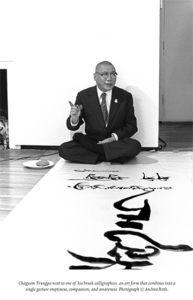
While Trungpa Rinpoche was a Tibetan, his poetry is unique and has therefore been included in the contemporary Buddhist poetry section.
When Chogyam Trungpa Rinpoche arrived in the United States, he asked, “Where are your poets? Take me to your poets!” Not only was Trungpa Rinpoche a spiritual teacher, but he was also an avid poet and dharma artist. Below, we describe the differences between our multiple collections of his work:
$19.95 - Paperback
Timely Rain: Selected Poetry of Chogyam Trungpa
Timely Rain is a collection of new and previously published poems, edited and curated by David I. Rome. While First Thought Best Thought presents poems in roughly chronological order, this collection is organized thematically, with each thematic section in chronological order. This allows readers to more easily navigate the poems, while also witnessing the evolution of Trungpa’s expressiveness and state of mind. Editor David Rome reflects in his Afterword that “poetry is also a refuge for Trungpa, perhaps the only place where he is able to step out of all the roles and self-inventions and speak truthfully from—and to—his own heart” (193). Themes contained herein include loneliness, samsara and nirvana, love, and sacred songs.
$16.95 - Paperback
Mudra is a selection of spontaneous, celebratory poems of devotion written by Chogyam Trungpa Rinpoche between 1959 and 1971. Trungpa opens his collection with two translations of Jigme Lingpa and Patrul Rinpoche, explaining that “they are the vajra statement which frees the people of the dark ages from the three lords of materialism and their warfare.” Also included are ten traditional Zen oxherding pictures along with Trungpa’s unique commentary.
$24.95 - Paperback
First Thought Best Thought: 108 Poems
Dictated (Trungpa composed poems verbally to a scribe) around the time of his arrival in the United States, this collection of poems, with an introduction by Allen Ginsberg, encapsulates Trungpa’s creative energy. His vision of joining East and West shines through each poem, combining classical Tibetan poetic influences with a modern American poetic style. As the collection progresses chronologically, readers witness Trungpa’s increasing familiarity and comfort with American culture. The collection’s title pays homage to William Blake’s “First thought is best in Art, second in other matters,” while also invoking the notion of beginner’s mind. As Ginsberg writes in his introduction, here is an “amazing chance to see his thought process step by step, link by link, cutting through solidifications of opinions & fixations” (xv).
Buddhist Songs and Poetry from Southeast Asia
Until Nirvana's Time: Buddhist Songs from Cambodia
By Trent Walker
Until Nirvana’s Time presents forty-five Dharma songs, whose soaring melodies have inspired Cambodian Buddhist communities for generations. Whether recited in daily prayers or all-night rituals, these poems speak to our deepest concerns—how to die, how to grieve, and how to repay the ones we love.
Introduced, translated, and contextualized by scholar and vocalist Trent Walker, this is the first collection of traditional Cambodian Buddhist literature available in English. Many of the poems have been transcribed from old cassette tapes or fragile bark-paper manuscripts that have never before been printed. A link to recordings of selected songs in English and Khmer accompanies the book.
Contemporary Buddhist Poetry
The First Free Women: Original Poems Inspired by the Early Buddhist Nuns, by Matty Weingast
Composed around the Buddha’s lifetime, the original Therigatha (“Verses of the Elder Nuns”) contains the poems of the first Buddhist women: princesses and courtesans, tired wives of arranged marriages and the desperately in love, those born into limitless wealth and those born with nothing at all. The authors of the Therigatha were women from every kind of background, but they all shared a deep-seated desire for awakening and liberation.
In The First Free Women, Matty Weingast has reimagined this ancient collection and created an original work that takes his experience of the essence of each poem and brings forth in his own words the struggles and doubts, as well as the strength, perseverance, and profound compassion, embodied by these courageous women.
Beneath a Single Moon: Buddhism in Contemporary American Poetry, edited by Kent Johnson & Craig Paulenich
For readers who prefer a more modern aesthetic, Beneath a Single Moon is a delightful read. This anthology features more than 250 poems by forty-five contemporary American poets, supplemented with essays exploring spiritual poetic practice. Among those included in this collection are John Cage, Diane di Prima, Norman Fischer, Allen Ginsberg, Susan Griffin, Anne Waldman, Philip Whalen, and Gary Snyder, who also provides the book’s introduction. Offering a refreshing look at spiritual poetry, the editors explain that “the variousness of the work [stands] very much at odds with the fairly common notion of American ‘Zen’ poetry as a literary remnant of the sixties, with derivative, and generally identifiable ‘Eastern’ criteria. It [is] even more intimately at odds, perhaps, with the well-diffused perception—at least in the West—of Buddhism as collectivizing and inimical to individual spirit” (xv-xvi).
After Ikkyu & Other Poems, by Jim Harrison
Those who find spiritual poetry can become too rigid or serious will find this to be a refreshing departure from the norm. These raw and often pithy poems by novelist Jim Harrison draw inspiration from his many years of Zen practice, and in perfect Zen spirit, they reveal a poet and practitioner who does not take himself too seriously. In his introduction Harrison explains, “It doesn’t really matter if these poems are thought of as slightly soiled dharma gates or just plain poems. They’ll live or die by their own specific density, flowers for the void” (ix).
Listen to a sample from Jim Harrison's original reading of After Ikkyu. Audiobook available on Audible and Apple.
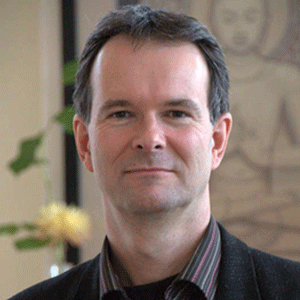
The Five Maitreya Texts: The "Zip Files" of the Mahāyāna
The five works that the Tibetan tradition ascribes to Maitreya resemble zip files that contain all the profound and vast topics of the Buddhist teachings. In their traditional order: The Ornament of Clear Realization comments on the emptiness taught in the Prajnaparamita Sutras and on what happens in the minds of bodhisattvas familiarizing themselves with emptiness on the paths and bhumis.
Related Books
The Ornament of Mahayana Sutras is a synopsis of all topics of those mahayana sutras that are not covered by The Ornament of Clear Realization and The Ultimate Continuum of the Mahayana.
Ornament of the Great Vehicle Sutras
$69.95 - Hardcover
By: Dharmachakra Translation Committee & Asanga & Jamgon Mipham & Maitreya & Khenpo Shenga
A Feast of the Nectar of the Supreme Vehicle
$69.95 - Hardcover
By: Asanga & Jamgon Mipham & Maitreya & Padmakara Translation Group
The Distinction between the Middle and Extremes explains the vast paths of all three yanas, emphasizing the view of Yogācāra (including the Yogācāra Middle Way) and the distinctive features of the mahāyāna.
$22.95 - Paperback
By: Dharmachakra Translation Committee & Asanga & Jamgon Mipham & Ju Mipham & Maitreya & Khenpo Shenga
The Distinction Between Phenomena and Their Nature discusses the difference between samsaric confusion and the liberating power of nonconceptual wisdom-the heart essence of all profound sutras.
Distinguishing Phenomena from Their Intrinsic Nature
$24.95 - Hardcover
By: Dharmachakra Translation Committee & Asanga & Jamgon Mipham & Ju Mipham & Maitreya & Khenpo Shenga
Maitreya's Distinguishing Phenomena and Pure Being
$24.95 - Paperback
By: Asanga & Jamgon Mipham & Jim Scott
Mining for Wisdom within Delusion
$39.95 - Hardcover
By: Coleman Barks & Karl Brunnholzl & Asanga & Maitreya & Mohammad Ali Jamnia & The Third Karmapa
Finally, The Ultimate Continuum of the Mahāyāna is a general commentary on buddha nature and represents a bridge between sutra and tantra.
$34.95 - Paperback
By: Rosemarie Fuchs & Asanga & Jamgon Kongtrul Lodro Taye & Khenpo Tsultrim Gyamtso & Maitreya
Thus, these five texts are mainly based on prajnaparamita, the classical teachings of Yogācāra (which are not identical with what is called "the Mind-Only School"), and the instructions on “Buddha nature” (tathāgatagarbha). Different Tibetan masters have voiced all kinds of opinions about the Maitreya texts representing the views of certain Buddhist schools, such as “Mind Only” (cittamātra), Yogācāra, Madhyamaka, or Shentong. However, as far as one's practice goes, says Thrangu Rinpoche, the tutor of the seventeenth Karmapa, it is necessary to determine-even in the Madhyamaka view - that appearances are nothing but mind, to resolve that mind is empty, and to realize mind's emptiness in meditation. According to the so-called "Mind-Only School," that mind is ultimately existent, but nothing like that is said anywhere in the Maitreya texts. So from that point of view, it can be said that all five texts belong to Madhyamaka in general. In particular, The Distinction Between Phenomena and Their Nature and The Ultimate Continuum present the view of the Shentong Madhyamaka School and are also considered to be foundations for Mahamudra.
In any case, Maitreya's works are crucial and celebrated because they provide a comprehensive overview of all the essential elements of mahāyāna motivation, view, meditation, conduct, and fruition. Being classical Indian works, they are not exactly light bedtime reading, but together with their commentaries (the extractors of the zip files) they paint a complete and detailed picture of mahāyāna Buddhism.
Now, different from the above traditional order of these five texts, a more accessible way for contemporary dharma students to study them is to begin with The Ultimate Continuum since it is the easiest one and discusses the nature of our mind as the very basis of everything on the Buddhist path. Next, The Distinction Between Phenomena and Their Nature enables us to discriminate ignorance and its manifestations from wisdom as the motor of the path to liberation. The Distinction between the Middle and Extremes explains the profound Middle Way and the basic principles of all three yanas. The Ornament of the Mahayana Sutras fills in the details of bodhisattva motivation, meditation, conduct, and fruition. Finally, The Ornament of Clear Realization as the most complex text combines the profundity of emptiness with the vastness of all paths and bhumis.
About the Author:
Karl Brunnhölzl, MD, was trained as a physician and also studied Tibetology. He received his systematic training in Tibetan language and Buddhist philosophy and practice at the Marpa Institute for Translators, founded by Khenpo Tsultrim Gyamtso Rinpoche. Since 1989 he has been a translator and interpreter from Tibetan and English.
SNOW LION NEWSLETTER ARCHIVE
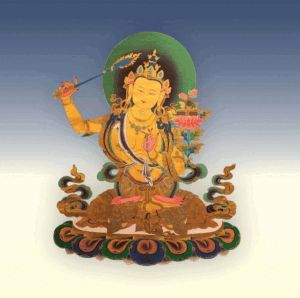
Madhyamika in Nyingma: The Reasons for Being Able to Relinquish the Obscurations Completely
| The following article is from the Spring, 2012 issue of the Snow Lion Newsletter and is for historical reference only. You can see this in context of the original newsletter here. |
This short excerpt is taken from
Groundless Paths:
The Prajnaparamita Sutras, The Ornament of Clear Realization, and Its Commentaries in the Tibetan Nyingma Tradition
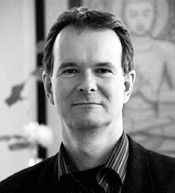
Based on the four stages of yoga, Madhyamikas realize all phenomena as the nature of suchness free from reference points and thus are able to relinquish all cognitive obscurations of clinging to real existence without exception. These four stages of yoga are as follows:
- Non-Buddhist and Buddhist tirthikas assert a permanent self that is empty of arising and ceasing. Within seeming phenomena, there is nothing that is empty of arising and ceasing (any entity that is permanent and a self), that is, there is no personal self, which is like the horns of a rabbit. Having determined that, through focusing on the focal object of the innate views about such a self one meditates by thinking, In terms of negative determination, there is no self, and, in terms of positive determination, [phenomena] are just mere phenomena. Through this, the clinging to a self is put to an end, which is the yoga of focusing on the lack of a self.
- Whatever is invariably observed together is necessarily not different in substance, such as happiness and the awareness that experiences that happiness. As for the appearance of blue and the mind that perceives this blue, by virtue of the reason of their invariable co-observation it is determined that what appears as a referent does not exist outside of the mind in which it appears. One familiarizes with the fact that what appears as an object, in terms of positive determination, is mere inner mind, and, in terms of negative determination, does not exist as an outer referent. Through this, the clinging to outer referents is relinquished.
- Having determined that, without anything to be apprehended, there is also no apprehender because these two are mutually dependent, one familiarizes with this by thinking, The two of apprehender and apprehended do not exist. Through this, also the clinging to a mere apprehender is eliminated, but what is not relinquished is the clinging to mere nondual wisdom.
- What originates dependency necessarily lacks a real nature (just like the appearances of illusory horses and elephants) and nondual self-awareness is also dependency originating. Having determined this, through familiarizing with all phenomena being free from reference points all cognitive obscurations of clinging to apprehended, apprehender, and self-awareness are relinquished without exception. Therefore, the Madhyamaka path relinquishes the two obscurations completely.
"Groundless Pathscontains the first in-depth study of the Abhisamayalamkara (the text studied most extensively in higher Tibetan Buddhist education) and its commentaries from the perspective of the Nyingma School of Tibetan Buddhism. This study consists mainly of translations of Maitreya's famous text and two commentaries on it by Patrul Rinpoche. These are supplemented by three short texts on the paths and bhumis by the same author as well as extensive excerpts from commentaries by six other Nyingma masters, including Mipham Rinpoche. Thus, this book helps close a long-standing gap in the modern scholarship on the prajnaparamita sutras and the literature on paths and bhumis in mahayana Buddhism.
"Groundless Paths contains Dza Patrul Rinpoche's brilliant commentaries on the Abhisamayalamkara, masterfully translated and annotated by Karl Brunnholzl. This third volume completes the presentation of the major Kagyu and Nyingma works on the prajnaparamita literature in English for the first time."
-ELIZABETH CALLAHAN, translator of Frameworks of Buddhist Philosophy
The Teacher-Student Relationship: Jamgon Kongtrul
The Teacher-Student Relationship: Jamgon Kongtrul
| The following article is from the Spring, 1998 issue of the Snow Lion Newsletter and is for historical reference only. You can see this in context of the original newsletter here. |
By Jamgon Kongtrul Lodro Taye
Foreword by Lama Tharchin
Introduction by Gyatrul Rinpoche
Translated by Ron Garry
In the Tantric Buddhism of Tibet, it is an abiding principle that the root of all good qualities is devotion to a fully qualified spiritual friend (a teacher or gum). Nonetheless, in the few decades that Tibetan Buddhism has begun to blossom in the West, numerous problems have arisen between students and their teachers that seem to call into question what should be a relationship of mutual devotion, honesty, and respect.
The formidable challenge of finding the right teacher, and for teachers to find the right students, has actually been of major concern to Buddhists for many centuries, and the topic was never more thoroughly explored, and the answers more clearly delineated, than they were by the unsurpassed Tibetan teacher, Jamgon Kongtrul, in a chapter of his monumental Buddhist encyclopedia, The Treasury of Knowledge.
Translated by Dr. Ron Garry, this essential text lays out in clear terms the credentials and qualities that every student should look for in their teacher, why a teacher is necessary, and how the relationship between guru and disciple is to develop once it is established. With chapters such as How to Seek the Spiritual Friend, Why is a Teacher Necessary, Categories and Qualifications of Ihe Master, and How the Student. Should Choose a Teacher, the translation of this authoritative work puts into the hands of every student all they need to know to undertake the most fundamental and important step on the path: finding a qualified spiritual teacher.
Dr. Garry's introductory commentary unpacks Kongtrul's text and elaborates many essential points, drawing especially on Gampopa's Jewel Ornament of Liberation and Buton's Jewelry of Scripture. This important volume is introduced by two of the most respected lamas teaching in America today, Lama Tharchin Rinpoche and Gyatrul Rinpoche.
Jamgon Kongtrul Lodro Tayí© (1813-1899), a pivotal figure in eastern Tibet's nonsectarian movement, was one of the most outstanding writers and teachers of his time. In his' monumental Encyclopedia of Buddhism (Treasury of Knowledge) he presents a complete account of the major lines of thought and practice that comprise Tibetan Buddhism.
Other books by Jamgon Kongtrul: Enthronement: The Recognition of the Reincarnate Masters of Tibet and the Himalayas; Jamgon Kongtrul's Retreat Manual] Myriad Worlds: Buddhist Cosmology in Abhidharma, Kalachakra and Dzogchen; Buddhist. Ethics.
Following is an excerpt from The Student-Teacher Relationship entitled How to Properly Follow the Teacher.
Kongtrul states that the teacher-student relationship is created and nurtured in two steps. First there should be a careful, mutual examination by the teacher and the student, then they should enter into a relationship. Through it, the student attains enlightenment and the teacher fulfills his commitment to guide sentient beings to enlightenment; thus it is very important for the relationship to be pure, uncontaminated with negativity, and unbroken.
He explains that examining the relationship is important, because if a relationship is begun with an unqualified teacher or student, both will break their samaya and they will have many problems. Kongtrul quotes from the Fifty Stanzas on Guru Devotion to emphasize the importance of a good relationship between the teacher and the student:
Because the lama and his students will fail together in the samaya, in the beginning, the warrior should examine the relationship of the master and the student.

He also enumerates the many problems the student will encounter if he receives empowerments from an unqualified lama: the student will be led down the wrong path; he will not be able keep his samaya; he will not be able to attain the siddhis; his precious human rebirth will be squandered.
Thus, Kongtrul emphasizes that it is necessary for both the teacher and the student to examine each other before committing to a relationship. Many of us in the West, practicing on various spiritual paths, leap into the teacher-student relationship, then begin examining our teacher and find faults. Often the student becomes angry and leaves the relationship, feeling hurt and speaking negatively about the teacher. Had the student examined the teacher initially, this problematic situation might not have arisen. This tendency is not confined to Western students. In fourteenth century Tibet Kun Khyen Longchenpa wrote:
First, when the relationship is new, they recklessly get involved without examination. They speak of each of the lama's noble qualities, but later on there is only recrimination. For some, whatever they do is mixed with deception and backbiting, and they dishearten the close circle [of disciples) around the lama; for them the result is the lowest hell itself.60
Thus, it is necessary for a Buddhist student in the Tibetan tradition to be familiar with the traditional lists given by Kongtrul of the qualities which characterize the qualified teacher.

Although it is important to be generous with offerings and to pay respect to the spiritual friend, the best offering is to put his teachings into practice and thereby attain enlightenment for the benefit of all sentient beings.

After examining a teacher, the student may choose not to enter into a relationship for two primary reasons: the teacher is unqualified, as Kongtrul previously described; or, although he is qualified, his style or personality may not be suitable for that particular student. To determine whether or not the teacher is qualified, the student should refer to chapters three and four, above, in which Kongtrul describes the authentic teacher.
On the second point, although, in the present work, Kongtrul does not refer to the style or personality of the lama, it is frequently mentioned in the oral instructions given by lamas. Khenpo Tsultrim Gyamtso Rinpoche illustrated this point with an example of an unharmonious match between a teacher who likes to focus upon logic and philosophy, and a student who prefers meditation practice.
Kongtrul states that after the student has examined the teacher and has decided he is both qualified and suitable, he should then fully rely upon that teacher as the necessary condition (rkyeri) for attaining enlightenment. Gampopa, in An Ornament to Precious Liberation, writes:
although you may possess the most perfect support [rten, the precious human body], but are not urged on by spiritual friends as a condition (for attaining enlightenment], it is difficult to set out on the path towards enlightenment, because of the power of habitual tendencies (bagchags) due to bad deeds committed repeatedly in former times.
In order to correctly rely upon the teacher, the student must have the proper attitude and then apply herself toward following the teacher. Kongtrul states that the proper attitude is to rely upon the spiritual friend in order to attain complete enlightenment. It is important that the student is not motivated to enter a relationship with a lama by the desire for personal gain; for example, the desire to gain respect by being associated with a great teacher.
Kongtrul writes that after having established the proper attitude, the student then follows the lama through action. He enumerates three principle methods for following the lama: giving material things and honor; paying respect; and following the lama by means of practicing his teachings. He explains that the student should be willing to offer the lama all his material possessions. The traditional texts state that an advanced disciple, such as Naropa, Marpa, or Milarepa, would offer everything to his lama, including his wife, children, or his own body, speech, and mind. For most students today however, these types of offerings are not only not expected, but strongly discouraged.
Honoring the lama means that the disciple is respectful. When the lama enters the room the student stands until the lama sits down, and then the student offers three prostrations. Also, upon entering a room where the lama is present the student should prostrate three times. Because the student treats his teacher as if he is the Buddha himself, he will not use the teacher's utensils, clothing, or sit on his teacher's cushion. In the teacher's presence, it is considered disrespectful for the student to lie down, yawn without covering his mouth, or to sit on the floor with his feet pointing towards the teacher.
Paying respect includes the various things a student can do for the teacher. In Tibet, for example, a student might have the opportunity of bathing or massaging the teacher. In the West, paying respect may include running errands, doing chores, helping carry things for the teacher, and so forth.
Traditionally, the most important way of following the teacher is to carry out all his instructions and advice concerning dharma practice. To this effect Kongtrul states:
Cheerfully practicing all the commands (bsgo-ba) given by the lama, and assiduously practicing whatever possible in the way of listening (thos), contemplating (bsam), and meditating (sgom) upon all the dhamia teachings, is better worship (bsnyen-bkur) than the ways previously mentioned, because the true spiritual friend is to be pleased by the offering of practice, and not by goods and so forth.
Patrul Rinpoche, in The Oral Instructions of My Excellent Lama, reiterates that the best offering is one of practice:
Although the lama is pleased by three types of service, it is said that the supreme type is the offering of practice. This means persevering in the practice of all the teachings taught by the lama and enduring all hardships. The intermediate way of rendering service is serving your lama by doing whatever he wants you to do with your body, speech, and mind. The lowest way to please your lama is by making generous offerings of material things such as food and wealth.71
Therefore, we are shown that although it is important to be generous with offerings and to pay respect to the spiritual friend, the best offering is to put his teachings into practice and thereby attain enlightenment for the benefit of all sentient beings.
The Teacher-Student Relationship
$24.95 - Paperback
By: Jamgon Kongtrul Lodro Taye & Ron Garry & Ven. Gyatrul Rinpoche & Lama Tharchin
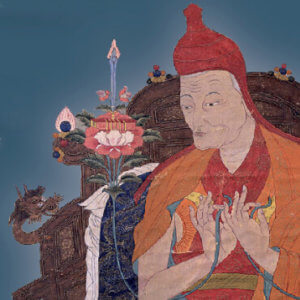
Related Books by Jamgon Kongtrul
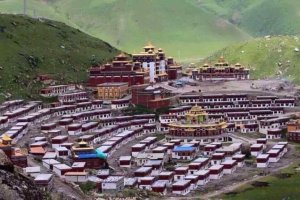
Dzogchen Monastery & the Dzogchen Rinpoches
| The following article is from the Spring, 1990 issue of the Snow Lion Newsletter and is for historical reference only. You can see this in context of the original newsletter here. |
It is of the greatest simplicity. It is what is. Dzogchen, which is beyond conceptions and transcends both grasping and letting go, is the essence of transcendental insight. This is the unchanging state of non-meditation in which there is awareness but no clinging.
Jikme Lingpa, The Lion's Roar
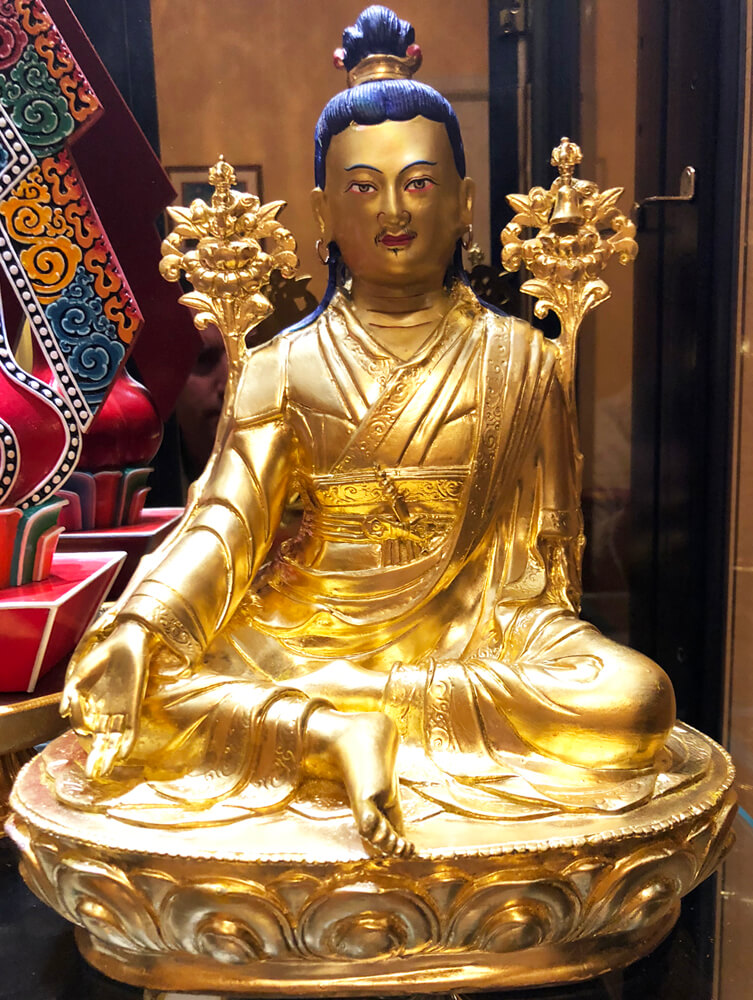
The first Dzogchen Rinpoche, Pema Rigdzin, was born in Kham Riwoche in Eastern Tibet in 1625. He overcame great difficulties in order to study with about thirty masters. He was ordained by the 5th Dalai Lama, thereby creating the close link between the Dalai Lamas and the Dzogchen Rinpoches which was to endure over the centuries to follow. Pema Rigdzin spent much of his life in retreats, which included one seven-year retreat on one seat and from one to three years in many other places, and he became renowned all over Tibet. Once when he was giving him an empowerment, his master Bakha Tulku, realizing the depth of his attainment, said: I have heard of Dzogpachenpo as a teaching, but I have never seen Dzogpachenpo as a person except in you. It was from then on that he became known as Dzogchen Pema Rigdzin, Dzogchen Rinpoche.
In the latter part of his life, he was summoned by the Dalai Lama, who told him that he believed he was, without any doubt, the reincarnation of Tsongkhapa, who had vowed to serve the Nyingma School in a future life. With that he instructed him to go and found a Nyingma monastery at Dzachukha in Kham. Dzogchen Rinpoche set out for Kham with his two greatest students, and when they came to the site of the future monastery, it was just an empty valley with a few nomads. To this day, the stone on which Dzogchen Rinpoche first rested still bears the imprint of his body. As he sat, undecided as to where to build the monastery, he put out a small protector's offering, whereupon a crow flew down, took the offering in its beak and threw it. The spot where it landed marked the site of the Dzogchen monastery.

Photo of Dzogchen Moansery in Tibet more recently from Wikimedia Commons
The fame of Dzogchen Rinpoche attracted students from all over Tibet, and with the help of the King of Derge, the monastery was completed over the years 1684-5. Dzogchen Pema Rigdzin passed away at 73, in 1697. The monastery he founded, called Dzogchen Rudam Orgyen Samten Choling, was destined to become the largest Nyingmapa monastery in Kham. It was situated in the Tudam Kyitram Valley, in Kham Derge on the border with Lingt-sang, the birthplace of the great Tibetan warrior-king Gesar. The site is counted as one of the twenty-five great pilgrimage sites of the Kham region, and the main one associated with the noble qualities of the Buddhas. Nearby lie three sacred lakes, and the cave where Padmasambhava first compounded myrobalan medicine.
It was in Mongolia that the Second Dzogchen Rinpoche Gyurme Tekchok Tenzin was born in 1699. He became a realized master of Dzogpachenpo and took a special interest in the Buddhist scriptures, copying the whole one hundred and eight volumes of the Kagyur (the Word of the Buddha) by hand. It was when the king of Derge found him alone copying the Kagyur that he was moved to establish a printing press at Derge to produce the Kagyur and Tengyur. The Second Dzogchen Rinpoche himself founded the printing press at Dzogchen, which later became one of the most well-known in Tibet. At the behest of the King of Derge, he published the writings of Longchenpa (1308-63), such as the Seven Treasuries, the Trilogy of Finding Comfort and Ease, and his great commentary on Guhyagarbha Tantra.
Dzogchen was now almost like a city in size, and famous for the Shedra and retreat centers that produced and attracted countless renowned scholars and masters of meditation. Among them was the great Patrul Rinpoche, who rose to fame as a scholar and Dzogchen master, poet and author, and played a leading part in the 19th-century renaissance of Buddhist culture and spiritual life in Tibet. His free spirit led him away from a monastic lifestyle, and he preferred to stay in retreat, travel or live amongst beggars. Scholars from all four schools of Tibetan Buddhism and Bon came to study with him.
Mipham studied at Dzogchen Shedra too, especially under Patrul Rinpoche. Famous for his original commentaries on important Buddhist scriptures, which were used as textbooks in colleges all over Tibet, he also wrote on many subjects. His printed works alone came to over thirty-two volumes.
Jigdral Changchub Dorje, the Sixth Dzogchen Rinpoche, was born in Tsari in 1935. Under the tutorship of Khenpo Gonri, he was already a master in whom many saintly qualities were seen, such as being able to foretell the unseen and leave imprints of his hands and feet in solid rock. He received teachings from a number of masters, including Jamyang Khyentse Chokyi Lodro, and was granted the title of Qutuktu by the Government of Tibet, the highest spiritual honor. He devoted all his resources and energy to furthering the Buddhadharma, encouraging the study of specific teachings, continuous ceremonies and cycles of practice in the study and retreat centers. Among a number of important images he constructed at Dzogchen was a three-dimensional Copper Coloured Mountain (Padmasambhava's paradise) made of various precious gems.
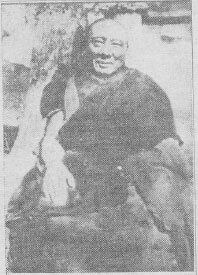
During his time, the lamas and monks at Dzogchen monastery numbered over a thousand, and it had over two hundred and fifteen branch monasteries. Dzogchen monastery had perhaps the best scriptural college and retreat center in the Nyingma and Dzogchen tradition. It was also famous for its sacred dances, to which people would flock from far and wide.
In 1959 Dzogchen monastery was razed to the ground by an occupying Chinese force, and Dzogchen Rinpoche, along with the majority of the lamas and monks, was killed. Barely half a dozen of the monks from Dzogchen managed to escape into exile.
The Seventh Dzogchen Rinpoche, Jikme Losel Wangpo, was born in Sikkim in 1964. He was recognized by the 4th Dodrupchen Rinpoche and enthroned in 1972. Among the other great Lamas from whom he has received teachings are H.H. Dudjom Rinpoche and Dilgo Khyentse Rinpoche, and his education has been very closely and personally supervised by His Holiness the Dalai Lama, who feels very strongly that link between himself and Dzogchen Rinpoche created during the time of the Fifth Dalai Lama. The present Dzogchen Rinpoche has long been regarded in India as being a great teacher of the future, showing remarkable qualities-profound intelligence and inner awareness along with quiet dignity and humility. In 1985 and in 1988, at the invitation of Sogyal Rinpoche and Rigpa Buddhist Meditation Centers, he made his first visits to the West.
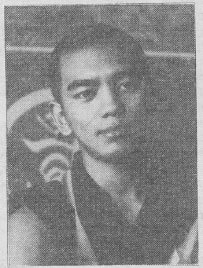
According to the directions of H.H. the Dalai Lama, the Dzogchen Monastery is being rebuilt in Kollegal, Mysore, South India, were it will become a major center for the Nyingmapa teachings. His Holiness considers this of very great importance, granting the site for the monastery close to his own residence. Already monks have enrolled and the monastery serves as a focus for the large Tibetan community, catering to its spiritual and educational needs.
Dzogchen monastery will become a major focal point for the Nyingmapa teachings, and will reestablish the great living tradition of Dzogchen, where both study and practice are equally emphasized. The most important phase of the development of the monastery is to establish a study college (Shedra) modeled on the famous Shri Singh Shedra' of the original Dzogchen monastery. Provision of teachers and facilities for study are of crucial importance for the young monks who have joined the monastery. Four salaried teachers provide a well-rounded education and instruct the monks in the traditional branches of learning. At present all the monks receive lessons in the one room of the kitchen/dining hall, which having only just been constructed, lacks any fittings or installations. As long as the hall is used for classes, it cannot be used for its original purpose.
The total construction of the Shedra, including building materials, is just over 100,000 rupees (approximately $58,600).
Water Tank Dzogchen monastery is located in a particularly dry area of southern India, where scarcity of water is a major problem. At the moment an old pipe supplies a very limited amount of water from the nearby hills, but it is not even sufficient for washing. Building construction requires a great deal of water and currently this can only be arranged with enormous difficulty. New toilets and bathrooms have been completed but owing to the water shortage these facilities cannot be used. The monastery badly needs an adequate water supply which can be provided through the installation of a water tank. The cost of the water tank is 15,000 rupees or $900.
Sponsorship Individual sponsorship for the fifty resident monks is required to ensure their continued training. For $20 a month a monk can be fully supported in his training and education. For full details on the sponsorship program and other projects contact Rigpa Fellowship, P.O. Box 7866, Berkeley, CA 94707. Tel.408-688-2535.

| The following article is from the Spring, 1989 issue of the Snow Lion Newsletter and is for historical reference only. You can see this in context of the original newsletter here. |
The ‘Great Perfection’, or ‘Great Completeness’
The following extracts are from teachings by Sogyal Rinpoche, Rigpa Fellowship 1989.
[Dzogchen] is the already self-perfected state of our primordial nature, which needs no perfecting, for it has always been perfect from the very beginning, like the sky. It is uncreated, yet spontaneously accomplished.

Its origins reach back to before human history, and it is limited to neither Buddhism, nor to Tibet, nor indeed even to this world of ours, as it is recorded that it has existed in thirteen different solar systems.
Dzogchen is an abbreviation of the Tibetan word "Dzogpachenpo." "Dzogpa" means "complete," or "the end," "chenpo" means great. It is widely translated as "Great Perfection," but this may imply a perfection that we strive to attain, a journey towards the goal of Great Perfection, and this is not the meaning of Dzogchen. Dzogchen is explained as Ground, Path and Fruition, and from the point of view of the Ground of Dzogpachenpo, it is the already self-perfected state of our primordial nature, which needs no perfecting, for it has always been perfect from the very beginning, like the sky. It is uncreated, yet spontaneously accomplished.
The uniqueness of Dzogchen is the way in which it brings precise experience of the awakened state, the direct experience of the absolute.
Traditionally Dzogchen can be traced to two original Sanskrit terms.
- Mahasandhi, which means the gathering of all or the quintessence, signifying that Dzogchen is the very essence, the cream and the heart juice of all teachings. Hence many of the teachings are known as "Nyingik" or "Heart Essence."
- "Atiyoga," which means "primordial yoga"; Ati indicates the topmost, summit or zenith. It has the sense of scaling a mountain, reaching the peak and having a view over everything. For Atiyoga or Dzogchen stands at the apex of the characteristic Nyingmapa presentation of the Buddhist path as Nine Yanas or vehicles, with the three inner Tantras special to the Nyingma tradition: Mahayoga, Anuyoga and Atiyoga. The zenith of all Yanas, Atiyoga represents the culmination of an individual's spiritual evolution, the point where all spiritual disciplines and paths have been traversed. The term Maha Ati for Dzogchen has also been used in recent time by masters like Chogyam Trungpa Rinpoche. . . .
The uniqueness of Dzogchen is the way in which it brings precise experience of the awakened state, the direct experience of the absolute. For in Dzogchen the main principle is to go beyond mind, to transcend the ordinary, thinking mind altogether and to reach the nature of primordial or pristine pure awareness called Rigpa, where we just rest.
As Shantideva points out in the Bodhisattvacaryavatara:
"The Absolute is beyond mind; that which is within the realm of mind is called the Relative."
the main principle is to go beyond mind, to transcend the ordinary, thinking mind altogether and to reach the nature of primordial or pristine pure awareness called Rigpa, where we just rest.
The Path
It is this that the master introduces to the student, and recognizing it is the Dzogchen View. In Dzogchen, The Path is described in terms of View, Meditation and Action, which encompass the practical training, and specifically the practice of Trekcho and the subsequent practices of Togal.
In the words of Dudjom Rinpoche:
"View is the comprehension of the naked awareness, within which everything is contained: sensory perception and phenomenal existence, samsara and nirvana. This awareness or Rigpa, has two aspects: Shunyata or emptiness as the absolute, and appearances or perception as the relative."
Within the vast expanse of Dzogpachenpo, everything there is in Samsara and Nirvana is perfectly complete. Although its Essence is empty, pure from the beginning (known in Dzogchen as "kadak"), its Nature is rich in noble qualities, pregnant with all possibilities, a vast, rich, creative field, which is spontaneously perfect (called "lhundrup").
Very simply, the Essence of mind is empty, spacious and pure from the beginning, like the open, blue sky, its Nature is luminous clarity, unobstructed and spontaneously present, like the sun with all its warmth and light, and its energy or manifestation is Compassion, unimpeded and all-pervasive, like the rays of the sun that shine on us all impartially.
The View
Introduction to the View, and resting in the state of Rigpa, is the heart of Dzogchen practice. In other approaches the realization of the nature of mind is arrived at through deduction and reasoning. In Dzogchen the actual direct experience of the state of the wisdom-mind of the Buddhas is transmitted through the blessing of a master who holds the Mind Direct transmission to students who, as a result of past aspirations and purified karma, have arrived at a point where they have both the openness of heart and devotion which make them receptive to the true meaning of the teaching.
When that powerful moment, the "meeting of mind-hearts," takes place the student has a direct and undeniable experience, or glimpse, of the nature of mind. In that instant, the master introduces and the student recognizes.
As the great Dzogchen master Patrul Rinpoche observed:
"The Nature of Mind, the face of Rigpa, is introduced upon the very dissolution of conceptual mind."
The true realization of the nature of mind is only possible when transmitted from the heart of the master to the heart of the student, and this is exemplified by the great figures of the Dzogchen lineage in the accounts of how at that moment their minds became the same as the wisdom mind of their master, for example when Garab Dorje transmitted his last testament, known as "Hitting the Essence in Three Words" to Manjushrimitra, or when Shri Singha revealed the nature of mind to Padmasambhava.
Introduction
This is why in Dzogchen the emphasis is on introduction. Dzogchen begins with introduction, because in Dzogchen there is no meditation to do separate from abiding by that View, and integrating it in action in daily life.
So, as Dudjom Rinpoche points out:
"Meditation consists of being attentive to such a state of Rigpa–free from all mental constructions, whilst remaining fully relaxed, without any distraction or grasping, because it is said that "meditation is not striving, but naturally becoming assimilated into it."
Out of the realization of the nature of one's mind radiates a deep compassion for those who have not realized, and thus in Dzogchen, meditation is described as the "radiance, or union, of wisdom and compassion."
Abiding by the continual flow of Rigpa becomes a reality and begins to penetrate the practitioner's everyday life and Action. Once the practice is truly integrated, it gives birth to a deep stability and confidence, because whatever arises, thoughts or emotions, will no longer delude one; they are liberated from their very basis. One can look into them with composure and equanimity, confident that "the Dharmakaya's efflorescence of whatever arises is neither good nor bad."
As Dudjom Rinpoche says:
"Action is being truly observant of one's own thoughts, good or bad, looking inwardly into the true nature of whatever thoughts may arise, neither tracing the past nor inviting the future, neither allowing any clinging to experiences of joy, nor being overcome by sad situations.
Fruition
This leads to the Fruition of Dzogpachenpo, which is complete enlightenment or liberation: realizing the Wisdom which is within, and on a manifest level attaining the Buddha body. Many Dzogchen practitioners have attained the rainbow body; transmuting their physical bodies into their light nature at the time of death.
Yet,
"until one attains the fully awakened enlightened state," advises Dudjom Rinpoche, "one should always value the relative aspect of phenomena and be mindful of the non-duality of appearances and their empty nature . . . . Though different forms are perceived, they are in essence empty; yet in emptiness one perceives forms. Though different sounds are heard, they are empty; yet in the emptiness one perceives sounds. Also different thoughts arise; they are empty, yet in the emptiness one perceives thoughts."
the more and more you practice, the deeper and more vast it becomes.
The practice of Dzogchen, though quite simple, is extremely profound; the more and more you practice, the deeper and more vast it becomes. In the inspiration of the teaching and with the confidence of the View in your heart, you relax into your nature and rest there.
For in Dzogchen meditation, the main point is to be as natural as possible, by releasing and relaxing effortlessly into your nature, into Rigpa. You just allow all confusion to dissolve into the absolute, and you assume the sky-like nature of mind. There is a very strong sense of loosening up, of releasing the heart and mind in deep ease and relaxation, as you enter into that state of Rigpa, in a very spacious, carefree way, without trying to do anything.
In brief, if you are not in any way contriving or manipulating, but just leave your mind in its natural state, content to be natural, that is Rigpa. When you are contriving or manipulating, that is not Rigpa. This one simple difference points to the heart of Dzogpachenpo.
The spirit of Dzogchen starts to penetrate and permeate the fabric of our everyday experience.
Absolute
Many people find that by far the most important feature of Dzogchen is its style, its attitude, and its feeling, qualities which bring tremendous relief in the ease and freedom they bring, and the absolute humor they shine onto our relative reality. The profoundness of the Dzogchen teaching lies in its tremendous clarity and vividness, its power to resonate the Truth, as a living, vital experience.
In fact for someone who has the natural disposition or karmic inclination, just to hear about Dzogchen can inspire the View. For Dzogpachenpo itself is not just a teaching, but a state, the absolute state. The teaching is a means, and a very powerful one, which links the absolute with the conditioned and relative.
Yet the wonder of Dzogchen is that it does not stain the absolute with concepts, but still speaks of it in conventional terms, bringing the Truth here into this world, and into our lives, even before we become completely enlightened. The spirit of Dzogchen starts to penetrate and permeate the fabric of our everyday experience. Even though we may be imperfect at this point, we can begin to glimpse our perfectness.
All the Buddhas are embodied within us, complete–that is why it is called Dzogpachenpo! They are already there, so there is no need to go out looking for them elsewhere.
That would be, just like Patrul Rinpoche said,
"to leave your elephant at home and go out searching for its footprints in the forest."
For more information:
Please visit RigpaWiki's for Sogyal Rinpoche's biography by clicking here.

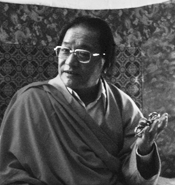
Related Books
$39.95 - Hardcover
By: Cortland Dahl & Third Dzogchen Rinpoche & Dzogchen Ponlop Rinpoche
$39.95 - Hardcover
By: Cortland Dahl & Third Dzogchen Rinpoche & Dzogchen Ponlop Rinpoche
$21.95 - Paperback
By: H.H. the Fourteenth Dalai Lama & Richard Barron (Chokyi Nyima) & Patrick Gaffney & Thupten Jinpa

